PERFORMING & VISUAL ARTS COLLEGES
WHY ART SCHOOL IS STILL WORTH IT
5 CAREERS FOR DANCE MAJORS
PLUS: ARTS COLLEGES & STUDENT TESTIMONIALS
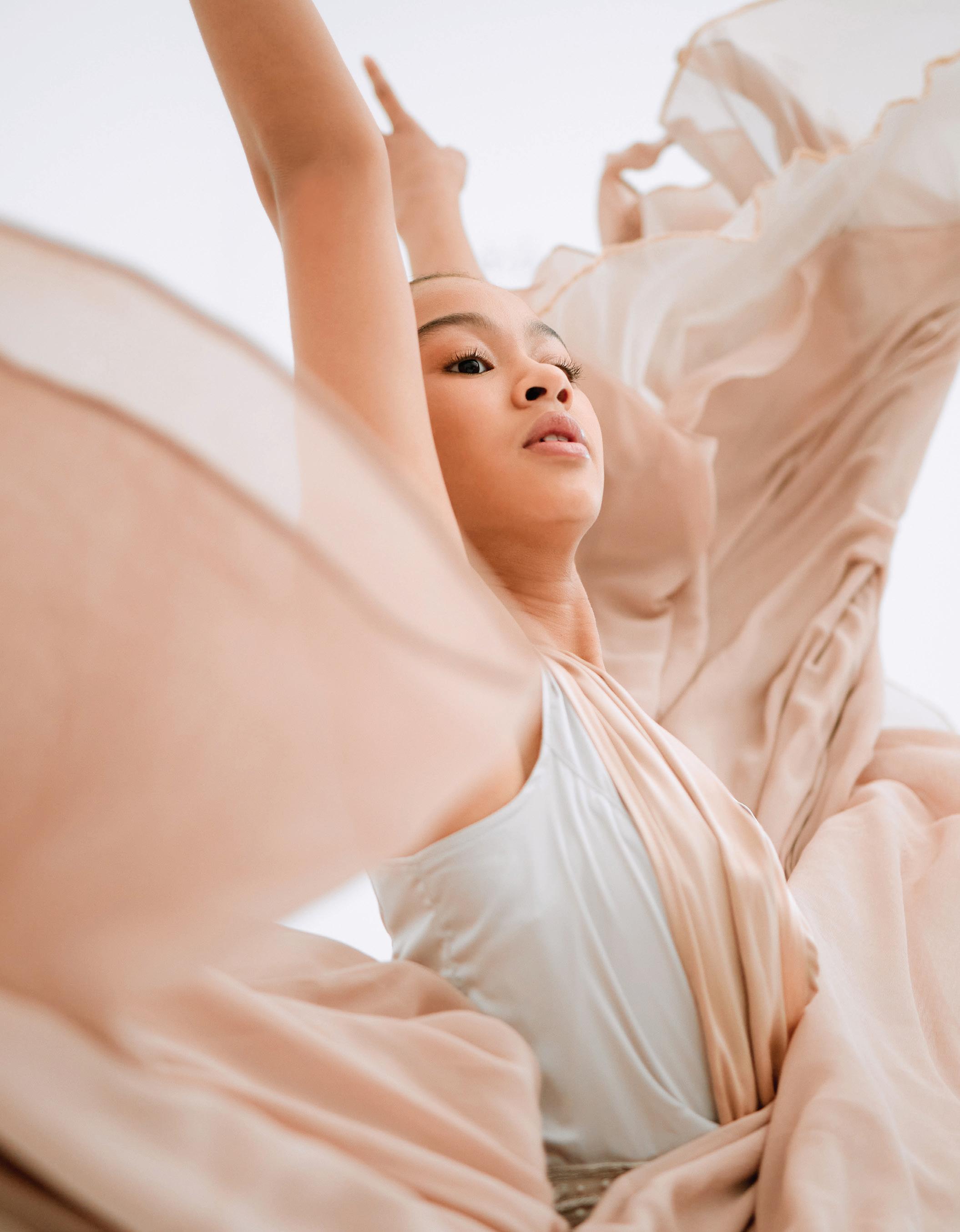
2022
A TEENLIFE MEDIA PUBLICATION www.teenlife.com
IMAGINE WHAT YOU’LL BE DOING IN FOUR YEARS. LET MCAD BE PART OF YOUR EXPLORATION.
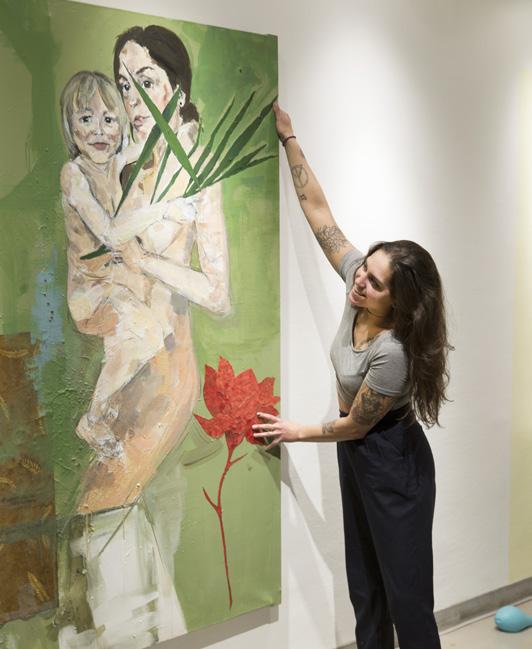



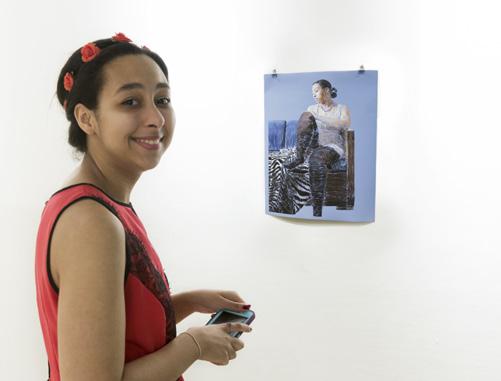



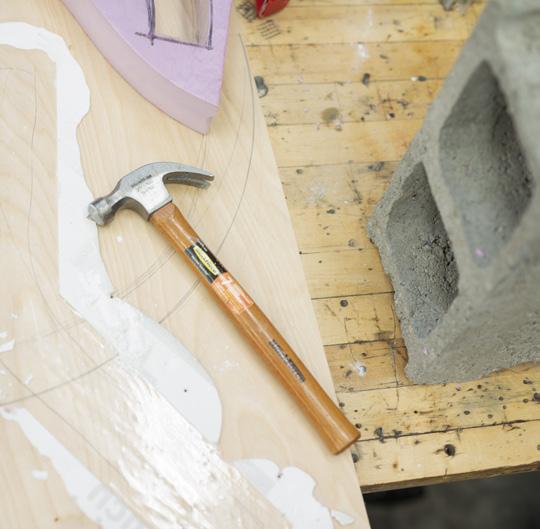
IMAGINEWHATYOU’LLBEDOINGINFOURYEARS.
LETMCADBEPARTOFYOUREXPLORATION.
Animation / Comic Art / Drawing and Painting / Entrepreneurial Studies / Filmmaking
Fine Arts Studio / Furniture Design / Graphic Design / Illustration / Painting / Photography
Print Paper Book / Product Design / Sculpture / Web and Multimedia Environments
MCAD.EDU IG@MCADEDU #MAKEMCAD
PRESENTING THE 2022 GUIDE TO PERFORMING & VISUAL ARTS COLLEGES


t’s been a wild and difficult few years for so many young people, but some things remain consistent. Right now, art, entertainment, music, and the artist’s interpretation of our unique moment in history have never been more important. We’ve put together this TeenLife Guide to encourage young artists out there to chase their dreams and make sure their voices are heard.
You likely have a lot of questions about an education and career in the performing arts. What kinds of jobs are actually out there? Should you go to a conservatory or a traditional college?
In the 2022 TeenLife Guide to Performing and Visual Arts, we answer all of these questions and more. You’ll find dozens of exciting program opportunities as well, most of which you can explore while still in high school. We hope this guide excites you about a future in the arts and helps you chart your path towards that future.
We can’t wait to see what you do next!
Marie Schwartz CEO and Founder, TeenLife Media


GOT QUESTIONS OR SUGGESTIONS? Email me at mschwartz@teenlife. com. APPLY TODAY CCAD.EDU #CCADEDU COLLEGE IS AN INVESTMENT. CCAD IS A BEST VALUE SCHOOL. bestvaluecolleges.org, 2021
KATHRINE G. MCGOVERN COLLEGE OF THE ARTS UNIVERSITY OF HOUSTON







@uhkgm_arts UH.EDU/KGMCA
2022 GUIDE TO PERFORMING & VISUAL ARTS COLLEGES
CEO
Marie Schwartz, mschwartz@teenlife.com
PUBLISHER
Janice Haller, janice@teenlife.com
EDITOR
Johnathan Kindall, johnathan@teenlife.com
ADVERTISING SALES
Christine LeMaire, christine@teenlife.com
Brenda Boos, brenda@teenlife.com
To Download a PDF of this Guide, go to: www.teenlife.com/guide-to-performing-visual-arts-colleges/
CREATE FEARLESSLY. MAKE A CAREER YOU LOVE.
Merchandising (B.S.)
Architecture (M.Arch.)
Ceramics
(Studio Art B.A., B.F.A., M.F.A.)
Comprehensive Design (B.S.)
Digital Art (Studio Art B.A., B.F.A., M.F.A.)

go.iu.edu/eskenazi-undergrad
Fashion Design (B.A.)
Fibers (Studio Art B.A., B.F.A., M.F.A.)
Graphic Design (Studio Art B.A., B.F.A., M.F.A.)
Interior Design (B.S.)
Metalsmithing + Jewelry Design (Studio Art B.A., B.F.A., M.F.A.)
Painting (Studio Art B.A., B.F.A., M.F.A.)
Photography (Studio Art B.A., B.F.A., M.F.A.)
Printmaking (Studio Art B.A., B.F.A., M.F.A.)
Sculpture (Studio Art B.A., B.F.A., M.F.A.)

6 IN MY OWN WORDS: Laguna College of Art and Design 8 NATIONAL PORTFOLIO DAY 10 IN MY OWN WORDS: Seton Hill University 13 5 CAREERS FOR DANCE MAJORS TO 16 IN MY OWN WORDS: The American Musical & Dramatic Academy (AMDA) 18 IN MY OWN WORDS: Anderson University 20 WHY ART SCHOOL STILL WORTH IT? 24 IN MY OWN WORDS: Dean College 26 IN MY OWN WORDS: The Liverpool Institute for Performing Arts 28 IN MY OWN WORDS: University of Arizona College of Fine Arts
WHAT IS A MUSIC THERAPIST AND HOW CAN I BECOME ONE?
IN MY OWN WORDS: Baldwin Wallace University
IN MY OWN WORDS: Wayne State University
IN MY OWN WORDS: Minneapolis College of Art and Design
5 CAREERS FOR DESIGN MAJORS TO CONSIDER
CONSERVATORY, ART SCHOOL OR TRADITIONAL UNIVERSITY?
COLLEGE LISTINGS: Looking for an art school?
IN MY OWN WORDS: Gettysburg College
INDEX: Find a school by state or region. Contents 2022 GUIDE TO PERFORMING & VISUAL ARTS COLLEGES 2022 TEENLIFE GUIDE TO PERFORMING & VISUAL ARTS COLLEGES | 5 CONSIDER
30
32
34
36
38
40
42
44
53
Did You Have to Prepare for this Major in Any Way?
I didn’t have an art background like many of my peers. I started doing art when I was at the community college. In hindsight, my portfolio is not as strong as I would like it to be, however, I did try my best to do a lot of figure drawings, color studies, and sketchbook work, just to get the mileage there.
IN MY OWN WORDS
Laguna College of Art and Design:
CHARLOTTE SONG

Why did you Choose to Attend Laguna College of Art Design ?
The number one reason that I chose Laguna College of Art and Design is because of its location. I did a campus tour when I was still deciding, and my first impression of LCAD was that the buildings don’t feel isolated from nature. There are plenty of trees and greens on campus, which feels like a calming place to get inspired and to get the creative juice out.
The second reason is that the tuition compared to many other art schools is a more affordable price, plus LCAD offers merit and competitive scholarships to help students finish college with less stress, which many students were able to get including me. I chose illustration because the curriculum is very broad, from graphic design to fine art to entertainment design, it includes a bit of everything. Back then, when I was not sure what I wanted to do, it was the best option for me. I found my passion in my junior year, which is background design/paint. After I graduate, I would like to be a background artist in the animation industry.
What Was
a Typical Day Like at Laguna College of Art and Design?
A typical day for me, let's use a day when I only have one class as an example. I am an early bird, so I tried to do all the entertaining activities in the morning since I would not have the time later, such as watching YouTube videos, reading novels, or playing mobile games. The morning class starts at 10 am. I live an hour away from campus, so I would leave around 8:30 just in case of traffic. After the 6hr class, I would go home, and maybe go grocery shopping on the way back, and then get straight into homework. It is hard to find time to cook when school is happening. I just eat dumplings or cook easy recipes, and I would do meal prep for the next day. After done with the homework, if I know what is going to be discussed for tomorrow’s class, I would do some research to get myself ahead. If I get everything done before 10 pm, I would read for another 30 mins and go to bed.
What was the Most Memorable Moment of Your Time at Laguna College of Art and Design?
The most recent memorable event was the graduation ceremony at Irvine Bowl. Although I was not graduating, seeing many of my friends walking on the stage made me feel so happy for them. The student speaker's speech was very touching. Completing college is definitely one of the most valuable achievements in life, and I am looking forward to my graduation next year!
What Advice Do You Have For Teens Looking for the Right College?
When looking for the right college, do a lot of research. If you can visit the school in person, I highly suggest you go see the classrooms, walk around the campus, talk to people in person, and if you can, try to visit during school time, so you can see how the classes are held, and see if you like the overall atmosphere. Another thing is to talk to the current students. Whether you reach out to them on social media or in person, they will give you the most honest thoughts on how they think about the school and share their experiences with you.
6 | 2022 TEENLIFE GUIDE TO PERFORMING & VISUAL ARTS COLLEGES
Design Your Future
BACHELOR OF FINE ARTS
Animation
Drawing + Painting
Drawing + Painting with Illustration Emphasis
Drawing + Painting with Sculpture Emphasis
Entertainment Design
Experimental Animation
Game Art
Graphic Design + Digital Media
Graphic Design + Digital Media with Action Sports Emphasis
Graphic Design + Digital Media with Illustration Emphasis
Illustration
MASTER OF FINE ARTS (MFA)
Drawing
Game Design

Painting
MINORS
Animation
Art History
Creative Writing
Drawing + Painting
Entertainment Design
Experimental Animation
Game Art
Graphic Design + Digital Media
Illustration
Sculpture
MINORS FOR GRAPHIC DESIGN
+DIGITAL MEDIA MAJORS
AR/VR
Motion Graphics
Packaging
Photography/Exhibition Design
UI/UX
NOW ACCEPTING APPLICATIONS
LCAD.edu
NATIONAL PORTFOLIO DAY:
What To Know for 2022
he National Portfolio Day Association (NPDA) is a non-profit organization whose members are 100+ accredited international colleges and universities of art and design (USA, Canada, Europe).
The NPDA’s purpose is to assist students in embarking upon their post-secondary or post-graduate educational journey through the coordination of National Portfolio Days.

8 | 2022 TEENLIFE GUIDE TO PERFORMING & VISUAL ARTS COLLEGES
WHY ARE PORTFOLIOS IMPORTANT?
For a student interested in the arts, there may not be a single piece of your college application more important than your portfolio. While your resume and your transcript show your achievements on paper, your portfolio shows who you are in full color.
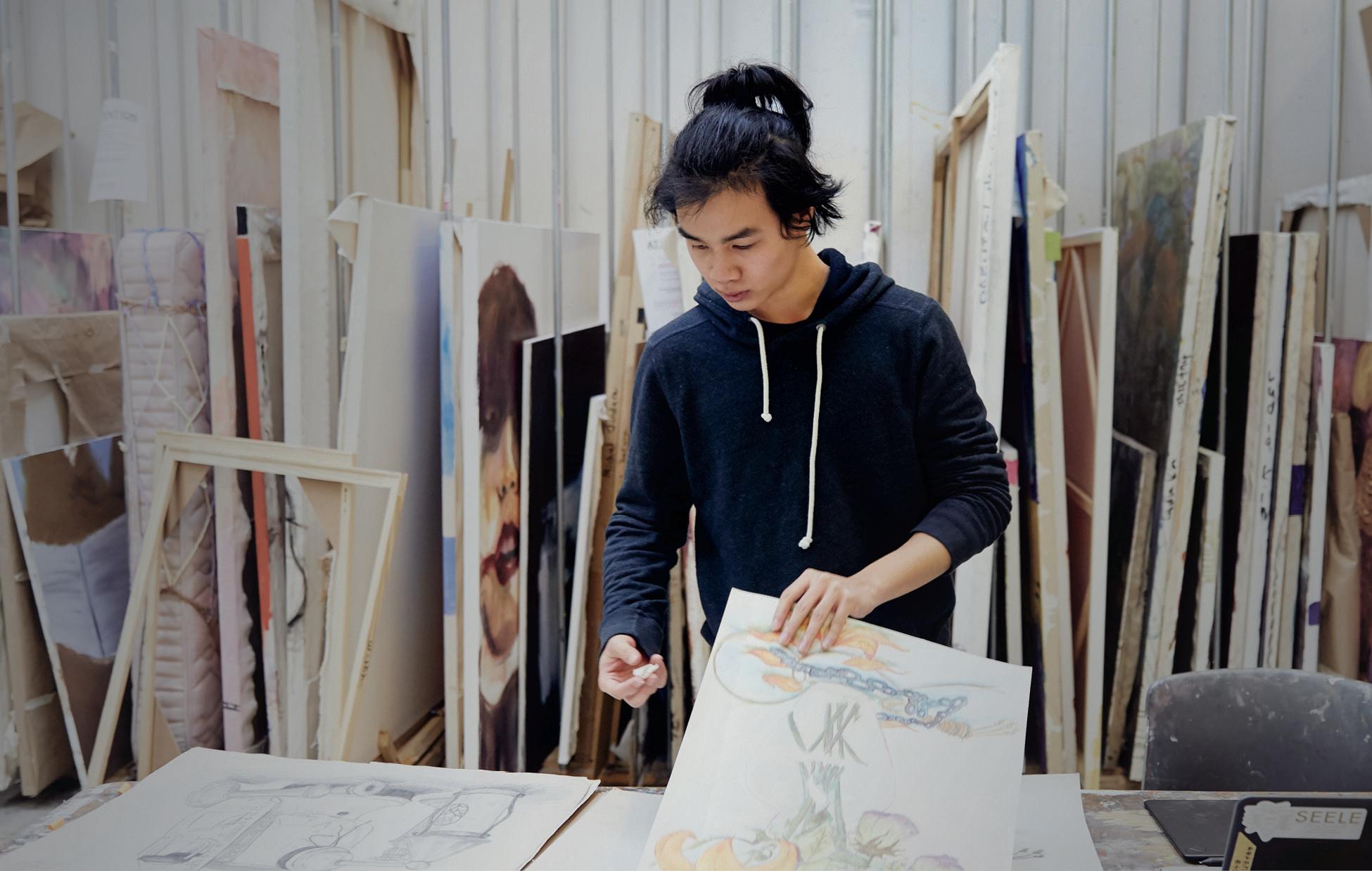
Simply put, a portfolio is a collection of your best work that provides samples of your art and proof of your biggest accomplishments. Portfolios are useful and needed for all kinds of artists too; visual artists, designers, animators, musicians and even performers can all benefit from a well-maintained portfolio.
For students, portfolios are especially useful in showing what you have learned, how it’s changed your art, and where you can grow. In the past, portfolios were carried around in folders and presented in person, but today portfolios can be hosted online through personal websites or other digital portfolio tools.
WHAT ARE NATIONAL PORTFOLIO DAYS?
These unique events are hosted by member institutions for the purpose of assisting artists and designers in their pursuit of higher education in the fields of visual art, design, and media. They provide an opportunity for students to meet oneon- one with trained professionals. who provide reviews and feedback on student portfolios. Schools typically require a portfolio for entry into art or design programs, and these one on one feedback sessions are invaluable for students’ successful applications.
HOW DO I ATTEND A NATIONAL PORTFOLIO DAY EVENT?
The National Portfolio Day Association has 32 different in-person events planned for the 2022/23 admissions cycle. To find a National Portfolio Day near you, visit: https://national portfolioday.org. •
Prepare to Stand Out
Registration begins November 1. saic.edu/ecp Art, design, and writing courses for adults, teens, and kids. SAIC CONTINUING STUDIES | saic.edu/ecp | ecp@saic.edu | 312.629.6170 Early College Program Summer Institute and Early College Program Online Summer Institute courses provide high schoolers with portfolio development, college credit, and a taste of college life at a world-class institution.
Seton Hill University:
IN MY OWN WORDS
Why Did You Choose to Attend Seton Hill University and Pick This Major?
Growing up, I’ve always told myself that I wanted to be in a profession that made me genuinely happy. As the years went by I realized that my one true passion was dance. I ended up visiting a couple colleges that offered dance as a major, but none of them felt right for me until I visited Seton Hill.

TaMara Swank and the dance faculty are incredible. They made me feel at home. The Visual & Performing Arts program here is unlike any other. Each individual is seen for his/her strengths and weaknesses and is given a personalized path which leads to one's end goals. The facilities at the arts building are modern and stunning, just being in the building inspires me. The dance program also offers a wide variety of faculty, styles, and tracks that allow us to focus on reaching our fullest potential. I knew Seton Hill was the right choice for me when I attended the Dancer For A Day event. Everyone was so genuine and I felt appreciated for my strengths that will guide me in my future plans as a dancer, teacher, and choreographer.
What Did You Hope to Get Out of the Program at Seton Hill University, and Did You Achieve It?
Entering the program, I really wanted to find what path to take as a dancer. I wasn’t sure if I wanted to perform, teach, or choreograph. Over the past two years, I have had many opportunities that have helped to guide me along the way. I’ve had a lot of performance opportunities both on and off campus and I started teaching and choreographing for local studios as well as the Seton Hill University Dance Academy (SHUDA). I serve as the choreographer for the Seton Hill University Dance Team and assistant/ demonstrator for the Thrive Dance Convention faculty.
All of these opportunities have helped me realize that I can do it all. I don’t need to limit myself to one area of dance because I have a passion for each of these areas. When I graduate, I’m hoping to audition and perform as well as teach and choreograph at dance conventions. In the distant future, I may consider opening a dance complex of my own.
Did You Have to Prepare for This Major In Any Way? If You Didn't, Do You Wish You Did?
Being a dance major, I think that all of our training prior to college helps prepare us for what’s to come. I needed to mentally prepare myself for this new level of professionalism. I’ve always been a perfectionist, which can lead to being very hard on myself. Before my classes started I really focused on what made me unique. It’s important to be confident in yourself, especially in the performing arts. When you find that self love, it’s easier to take care of yourself and learn from the people around you without putting yourself down.
What Was the Most Memorable Moment of Your Time at Seton Hill University?
How do I pick one?! There have been so many memorable moments here at Seton Hill. Honestly, there’s at least one moment a day that I find special. So many people here have added to my list of amazing memories that I'll never be able to pick just one. That alone tells me that I made the right choice.
What Advice Do You Have for Teens Looking for the Right College?
As cheesy as it sounds, you truly will know, deep down inside, when a college is the right choice for you. Always look for a college that welcomes you as an individual. You should find a college that appreciates your unique qualities and where those around you can help lift you up.
SKYLER HOSTETLER 10 | 2022 TEENLIFE GUIDE TO PERFORMING & VISUAL ARTS COLLEGES
THE
SCHOOL OF
Visual & Performing Arts

DEPARTMENT OF MUSIC

COMMERCIAL MUSIC (B.M.)
MUSIC (B.A.)
MUSIC EDUCATION (B.M.)
MUSIC
PERFORMANCE (B.M.)
MUSIC
THERAPY (B.M.)
SACRED MUSIC (B.M.)
DANCE - CHOREOGRAPHY (B.A.)
DANCE - PEDAGOGY (B.A.)
DANCE - PERFORMANCE (B.A.)
DANCE - PRE-DANCE/ MOVEMENT THERAPY (B.A.)
THEATRE – MUSICAL THEATRE (B.A. & B.F.A.)

THEATRE ARTS (B.A.)
THEATRE BUSINESS (B.A.)
THEATRE DESIGN & TECHNOLOGY (B.A.)

THEATRE PERFORMANCE (B.A.)
DEPARTMENT OF ART & DESIGN

ARTS ADMINISTRATION (B.A.)
ART EDUCATION (B.A.)
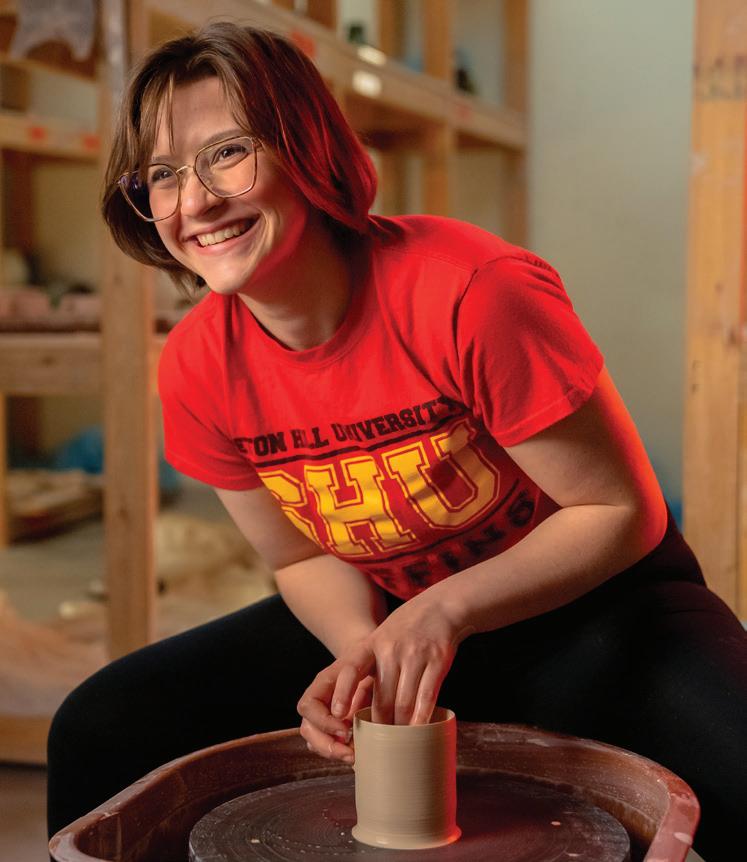
ART HISTORY (B.A.)
ART THERAPY (B.A. & M.A.)
FINE ART STUDIO (B.F.A.)
GRAPHIC & INTERACTIVE DESIGN - ANIMATION (B.F.A.)
GRAPHIC & INTERACTIVE DESIGN - PHOTOGRAPHY (B.F.A.)
STUDIO ART (B.A.)
For more information, or to apply online: setonhill.edu/VPA
DEPARTMENT OF THEATRE & DANCE







@theblackbirdacademy LEARN MORE Call +1.615.385.2423
CAREERS FOR DANCE MAJOR TO CONSIDER

 BY JOHNATHAN D. KINDALL
BY JOHNATHAN D. KINDALL
f you’re nervous about the practicality of a dance degree or are facing criticism from certain family members regarding your decision, we have good news: there’s a whole world of dance careers out there for you to explore! From a professional dancer on Broadway to a small town yoga instructor, there’s so many different directions your dance degree can take you, all with their own benefits, opportunities, issues and complications.
Below, we’ll explore 5 potential career paths for students who graduate with a dance degree. Keep in mind that these are just some of the endless opportunities out there, and use this article as inspiration when considering how best to apply your brand new degree. We can’t wait to see where you end up!
1. PROFESSIONAL DANCER
Obviously, a large majority of students who want to obtain a college degree in dance are hoping to use that degree to make dancing their full time job. A career as a professional dancer can take a number of different directions, all depending on your age, location, the style of dance you enjoy and so much more. Some dancers work as backup performers for touring artists. Others perform every night on Broadway. Still others make a living by appearing in music videos and commercials. There’s a dozen different ways to make a career as a professional dancer, and, while the job may not be as stable as others, it’s sure to be a rewarding experience for anyone passionate about the art. »
2022 TEENLIFE GUIDE TO PERFORMING & VISUAL ARTS COLLEGES | 13 5
Like any artistic career though, there are a number of obstacles when it comes to “making it” as a professional dancer. Schooling, training, workshops, auditions, rejections and injuries are just a few of the things that professional dancers face on a daily basis. For many, these challenges are worth it, and if you’re in that boat then we encourage you to shoot for the stars. However, remember that whether it's due to age, illness, injury or something else entirely, most dancers are not professionals their entire life. In those cases, some of the other dance-based careers on this list can be considered instead.
2. CHOREOGRAPHER
Whether or not they are still dancing themselves, choreography is one of the most common fields for someone with a dance degree to step into, with a number of corporate and commercial opportunities available at any given time. A choreographer plans, outlines and teaches different routines to students or other dancers, and they are an integral part of many different artistic fields like theater, live music
and ballet. To be a great choreographer, one must have a variety of skills including a mastery of different dancing styles, teaching experience and specific trade knowledge for their field.
3. YOGA OR PILATES INSTRUCTOR

Well this might at first seem like a compromise on your dance degree, we promise you that a career as a yoga teacher, pilates instructor or physical therapist is one of the very best ways to get the most of your dance degree. All of these disciplines, dance included, focus on kinesthetics and the mind-body, and paying attention to how one moves their body and what happens when they do is one of the most important jobs of a dancer. Since all dancers are likely to have some yoga training and many yoga teachers have dance expertise, it should come as no surprise that the two fields regularly cross over with one another, and many dancers teach yoga as a side hustle or second career.
4. ADMINISTRATION OR MANAGEMENT
Elsewhere in this guide we have a section for artistic careers that non-performers can pursue, and a role in dance administration or management is a great example of such a position for someone with a dance degree. Administrative work in dance can include working behind the scenes for a ballet house or theater, and management opportunities often appear when dealing with touring dance troupes. While both may require some additional experience in business or administration fields, a dance degree and knowledge of the industry can go a very long way.
5. DANCE MEDICINE
As alluded to above, dancing can take a toll on the body, and just like in athletics, there are medical professionals who specialize in dance and the unique physical challenges that dancers may face throughout their life and career. Again, this career path will require some other specialized training in addition to just a dance background, but an understanding of both the act of dancing and the industry can be indispensable for a dance medicine specialist. •
14 | 2022 TEENLIFE GUIDE TO PERFORMING & VISUAL ARTS COLLEGES
THE REAL WORLD DOESN’T WAIT. NEITHER SHOULD YOU.



Take the next step at Syracuse University! In the College of Visual and Performing Arts, our programs span the disciplines of art, design, film and media arts, drama, music, and communication and rhetorical studies. Add the benefits of in-house career advising, alumni mentorship, and study abroad opportunities, and it’s easy to see why we’re the right choice for you.




315.443.2769 admissu@syr.edu
vpa.syr.edu
IN MY OWN WORDS
HOSEA MUNDI
Why Did You Choose AMDA and Select This Major?

After high school I knew that I wanted to get into acting, but I couldn’t decide If I wanted to act for the stage or the camera. My theatre teacher had told me about the acting program at AMDA and how intense the training was. Some of her previous students had attended the school. After going through AMDA’s website, I was very adamant about attending this school for its BFA acting program. That was until I read through their Music Theatre program. I had just finished doing a musical at my school, and even though I wasn’t the strongest singer, in the back of my head there was this slight joy I felt whenever I sang. That small voice in the back of my head grew louder the more I read about the program. In the end it was my family who persuaded me to switch my training to musical theater. Why learn only how to act when you can learn how to sing and dance as well, they told me. And, oh boy, am I glad I listened to them. Never did I think in three years I would grow to be such a strong singer.

Did You Have to Prepare for This Major in Any Way?
Yes, before auditioning for AMDA my theater teacher and I went through three songs and some monologues that sat comfortably in my voice. For my three songs I focused on “Hold Me in Your Heart” from Kinky Boots, “Music of the Night” from Phantom of the Opera and “Don’t Let Me Go” from Shrek the Musical. My teacher made sure I had a dramatic song, a classical song and a comedic song. As for my monologue, I did a comedic scene from the most recent musical I was in, The Wedding Singer.
What Was a Typical Day Like at The American Musical and Dramatic Academy?
A typical day at AMDA always started with me warming up and putting on a concert in my shower at 8 a.m. The days are long here at AMDA. There is a lot of good work to be done, and I cannot stress enough how important warming up first thing in the morning is. My first class is usually a Gen Ed class such as math and English composition. After that my next classes would be either my MT core classes, where I got to work on duets, trios, audition techniques and songwriting with my other classmates, or acting classes, where I got to work on monologues, scene study, off- and on-camera work and improv, or dance classes, where I took Tap, Jazz, and Ballet. Later in the day I would head out to rehearsals for the BFA shows, mostly the BFA musicals. The musicals are so fun to do here at AMDA!
What Was
the Most Moment
of
Your Time
at the American Musical and Dramatic Academy?
My first memorable moment would have to be my final bow during my last BFA musical. The productions here are so beautiful to be a part of. The costumes, mics and lighting make you feel like you're a professional. After being a part of every show since my first semester, it was so rewarding to be able to get up on stage and share one last bow with my friends. My second most memorable moment would have to be first semester when my new group of friends and I held a Secret Santa get-together in the dorms. On campus most of the fun will come from the connections and the families you create off stage rather than on stage. And I guarantee you these connections will last for eternity.
The American Musical and Dramatic Academy (AMDA):
16 | 2022 TEENLIFE GUIDE TO PERFORMING & VISUAL
COLLEGES
ARTS
AUDITIONS
For Scholarships to study in New York City and Los Angeles
Bachelor and Associate Degrees
Acting
Musical Theatre
Dance Theatre
Performing Arts
Master Degrees
Theatre
Writing for Theatre and Media

IN MY OWN WORDS
MILIAN
Why Did You Choose Anderson University and this Major?
I chose Anderson University because its professors and students were the type of people that I wanted to be surrounded by for four years. God-fearing, creative, knowledgeable, supportive, and talented. It was made very clear to me that the foundation of this university is the gospel of Jesus Christ.
Also, the university proved to me that they were going to invest in me, not just monetarily, but by giving me opportunities and attention that larger schools could not afford to give.
I chose the commercial music major because I knew my passions and talents lied in music, but I was not sure yet where I wanted to focus those talents. The commercial music program is very broad and allows for students to taste a lot of different experiences and responsibilities to see which the student gravitates towards.
What Did You Hope to Get Out of the Program, and Did You Achieve It?
I wanted to spend four years tasting a bunch of different areas within the world of music. That is exactly the sort of education I received. As a performer, I've been on stage playing piano, keyboards, synthesizers, drum set, percussion, electric bass, melodica, vocoder, and even triggering Ableton through a novation launchpad. I've performed with commercial ensembles, choirs,

orchestras, music theatre shows, jazz combos, big bands, and worship teams. I've gotten to arrange, orchestrate, music direct, and conduct on many different occasions. I received a lot of creative liberty that truly blessed my education by letting me passionately run after any new idea that excited me.
Did You Have to Prepare for this Major in Any Way?
I felt very prepared for this major. I had a background in performing, with choirs, jazz bands, orchestras, and worship bands. I also had begun an online presence, which has blossomed during my college career. Lastly, I had a head start in the theory program because music theory was my obsession in high schooI. This is not necessary, but it enabled me to not have to stress about freshman level theory course, because my foundation was solid.
What is a Typical Day at Anderson University Like?
The typical day as a commercial music major in AU is really special. I would start my day by grabbing a breakfast sandwich at Chronicles Cafe. Then, I would do my daily bible study before my first class. Then, I'd go to some of the various exciting music courses offered here (some of my favorites were Conducting I, Orchestration, Entrepreneurship, and Theory V). Grab lunch with some friends after class at Chick-fil-a.
Then I'd head back to the fine arts center to run a rehearsal with my commercial music band. We'd often grab dinner together in the Culinary Center after rehearsal. After that I'd often spend my evenings either having a jam session with my fellow students, working in the recording studio on an album, or attending a performance of a friend either on or off campus.
What Was the Most Memorable Moment of Your Time at Anderson University?
Probably the jam sessions will be the most memorable. We spend so much time in rehearsals and shows together, playing pre-arranged, programmed music, and it's always very fun. But, when we can all get together in a rehearsal room or in the auditorium late-night, and just freely express ourselves... there is no feeling more special. It's like one big party celebrating music, each other's talents, and a very good God. Somebody starts improvising some lick, and the night takes off. No one knows where it will end up, but it is always special. It's my favorite aspect of the culture here at Anderson University's commercial music program.
18 | 2022 TEENLIFE GUIDE TO PERFORMING & VISUAL ARTS COLLEGES
Anderson University: MAX
The Creative Collective: Music & Film
____
Real Experience
Perform/work at famous music venues and festivals around the UK and Europe.

Project Funding
Funds to submit films into festivals and budgets to fund short films.
Latest High-Tech Equipment and Facilities
Access to Film and Digital cameras from day one.
Talent Match
Giving students vital experience and work opportunities in the music industry*.
Music Courses: BIMM Institute
UK (London, Brighton, Manchester, Bristol, Birmingham)
Germany (Berlin, Hamburg), Ireland (Dublin)
Diploma
London only
Performance (Vocals, Guitar, Drums, Bass), Songwriting, Music Production
Single & Joint Undergraduate Degrees
BMus (Hons) Performance (Vocals, Guitar, Drums, Bass, Keyboards)
BA (Hons) Songwriting
BA (Hons) Music Production
BA (Hons) Music Business
BA (Hons) Event Management
BA (Hons) Music Marketing Media and Communication
Masters Postgraduate
MA Performance, Entrepreneurship, Music Production, Composition
bimm.ac.uk
bimm-institute.de bimm.ie
Film Courses: Screen and Film School
UK (Brighton)
Undergraduate Degrees
BA (Hons) Filmmaking
BA (Hons) Film Business & Production
BA (Hons) Production Design for Screen & Film
BA (Hons) Hair and Make-up for Screen & Film (subject to Validation)
Masters Postgraduate
MA Screen & Film Production
screenfilmschool.ac.uk
BIMM Institute
Germany (Berlin)
Undergraduate Degree
BA (Hons) Filmmaking
*New Partnership with Spotify signed in 2021
WHY ART SCHOOL STILL WORTH IT?
BY JOHNATHAN D. KINDALL
career in the visual or performing arts can be incredible, high-paying and rewarding, allowing students from all walks of life to follow their dreams and make a career of doing something that they love. But is it still worth it to go to art school?

Perhaps this is a question that you’ve heard from doubtful family members when you or your student expressed interest in studying the arts in college. Or maybe it's a question asked out of financial necessity, and you’ve found yourself asking if it’s really worth it to pay today’s exorbitant tuition just to get an art degree?
In many circumstances, attending art school is absolutely still worth it, and we highly recommend it. While an art degree does not immediately turn one into an artist, the connections and knowl-
edge that come with obtaining such a degree can fast-track students to success, and there are plenty of artists who would never be where they are today without the assistance they received back in school.
However, the truth is that whether or not one decides to go to art school depends on a number of different factors, as does whether or not they succeed while they’re there. Art school can be an exciting, electric experience full of inspiration, creativity and collaboration, but each individual student will get out of it what they put in. Setting your own expectations and understanding the benefits and risks will ensure that you can make the decision that is right for you or your young artist.
Here are 3 reasons why we think going to art school is worth it!
20 | 2022 TEENLIFE GUIDE TO PERFORMING & VISUAL ARTS COLLEGES
1.NETWORKING
One of the biggest benefits of attending college is the ability to connect and network with professors and like-minded peers in your field. In fact, proper networking skills are often just as important to landing a job out of college as individual talent or knowledge might be. From business students to journalists and all the way to artists, the ability to learn from and leverage your relationships with others is one of the biggest advantages of obtaining a university degree.
For art majors, this is even more important. While it's obviously possible to meet other artists outside of an institutional learning environment, the ability to do so in a space where everyone is focussed on learning and growing cannot be understated. In art school, everyone you meet is a future collaborator. The person who sat next to you in your introductory acting class? They could be directing their first movie in five years. The classmate who practiced with you before a recital? They could pull you into a last min-
ute touring gig. Relationships with an arts professor can be even more rewarding and impactful, as many professors still work and practice in their own field and can offer insider knowledge, career tips, and even jobs to upperclassmen.


In the art world, for better or for worse, it often comes down to who you know, and one of the very best ways to know people is to meet them in college. If you go to art school and don’t actively try to widen your network as far as possible, you’re not getting the most out of your education, and the experience may not end up being worth it.
2.CRITIQUE
Listening to and properly implementing feedback and critique is one of the most important things that an artist can do in order to improve their work and become a better artist. However, for many young artists, it can be hard to know where to find this critique. How do you tell »
Bachelor of Arts in Music
Double Major with Music
Bachelor of Music Education

Bachelor of Music in Performance
For Open House and Audition dates, go to: www.gettysburg.edu/music


I www.gettysburg.edu/music

w
FI nd Your Mus Ic
constructive criticism from the destructive? How do you find someone who actually understands your medium, who knows what to say to actually help you improve?
Access to unbiased, constructive criticism and critique from experts is another one of the biggest benefits of attending an art school, and a major reason to consider attending. This is especially true if you’re working in an older medium like sculpting or painting, where the best practices have been handed down for hundreds of years, but it’s also important for newer and less established traditions like digital art and graphic design. You’ll never know what you’re doing wrong or how to get better unless someone tells you, and professors at art schools are often there to do just that.
It’s not that there aren’t other ways to grow and improve your art without expert critique, but, for some students, it may take twice as long to develop the style or skills they’re going for. In a field where being at the right place at the right time is as
important as anything else, that might not be a risk you want to take.
3. MOTIVATION
If you’re been pursuing your art on the side throughout high school, perhaps you’ve struggled with motivating yourself. It’s true, sometimes, picking up the pencil or tuning the instrument can be the hardest part of the job. Art schools then, which offer a dedicated space in which to explore and pursue your artistic passion with no distractions, can be a huge benefit to students like these.
Constantly having assignments due and being held accountable for your work is an experience that most artists who are just starting out will never experience outside of college. Being a working artist means keeping strange hours and meeting strict deadlines, and the college experience teaches this like nothing else. In fact, for some art students, the organizational skills learned at school are just as important as the artistic ones.
Be the future of theatre & performance
Study your Bachelor’s degree at a top UK school for the performing arts

Three-year degrees available:
• Acting
• Musical Theatre
• Drama & Applied Theatre • Playwriting • Theatre Crafts, Design & Production
Find out more: www.cssd.ac.uk/teenlifepva
Another aspect of this is competition. There’s little that is more motivating than being surrounded by dozens of artists who are all trying to make it in the same industry as you. This competitive environment can go too far of course, but healthy competition with others is one of the best ways that arts schools keep students on their toes and focussed.
CONCLUSION

In the end, no one can make the decision on whether or not art school is worth it except you and your family. Each individual's situation is different, and traditional art school is not the answer for everyone. That being said though, we hope this article has shown that art school is still worth it in a number of different ways. Offering a unique learning environment that is perfect for collaboration, growth, and self-motivation, art schools everywhere are still bastions of learning that are worth the cost of entry for students around the world. •


artsandmedia.ucdenver.edu FINE ARTS. FILM. MUSIC BUSINESS. 3D ANIMATION. TELEVISION. RECORDING ARTS. PERFORMANCE. DIGITAL DESIGN.
TURN WHAT YOU LOVE INTO WHAT YOU DO.
Dean College: BENJAMIN
IN MY OWN WORDS
LEBLANC
Why Did You Choose to Attend Dean College and Select This Major?
I grew up in a family of performers from dancers to figure skaters and at an early age you could find me dancing. I never missed an opportunity to perform, and I loved it. It wasn’t long before I fell in love with singing and musical theatre. It was then that I knew that I wanted to be a performer when I grew up. When it came time to look at colleges, I knew I wanted to combine my two passions – dance and theatre. Many schools discouraged pursuing both majors, but Dean College not only supported the idea but had students who were doing the same thing. After meeting those students, I knew Dean was the place for me. Dean gave me the freedom to pursue my passions and supplied me with the tools I need to reach my dreams.
What Did You Hope to Get Out of the Program, and Did you Achieve It?
I knew I wanted to be surrounded by like-minded, driven performers like myself. I want to be in an environment where I would be pushed by the talent around me so that I could be the best performer possible. This environment would not only push me to be the best but encourage others to be their best. We are able to grow collectively and do something special together.
Did You Have To Prepare for This Major in Any Way?
Because I grew up in a family of performers, I’ve been training for my major my whole life. Early on I took dance lessons in styles like tap, jazz, ballet and acro. Then, in middle school I started in theatre, getting more comfortable performing. By the time I was in high school, my training became more serious at the Palace Theatre in Manchester, NH. There I was surrounded by incredible talent and teachers who had success at the highest level, including on Broadway. I participated in semester-long intensives and performed in productions put on by Palace’s artistic director and visiting artists.
What Was a Typical Day Like?
A typical day starts with getting my body and mind ready for the day. Most days I start with stretching routines, yoga and goal setting. Then I’m off to class. I take a mix of general education classes that give me a holistic education and theatre classes that hone my skills. From there, I’m off to rehearsals for my current project or show. And, of course, I carve out time for friends and participating in clubs like Speakeasies, Dean’s improv group.
What Was the Most Memorable Moment of Your Time at Dean College?
Outside of growing as a performer, I love championing my peers. One of my closest friends had written a play, something he’d spent years working on. When he shared it with me, it became one of the best things I’d ever read. He asked if I’d be willing to play the lead. I obviously said yes and even offered to help him produce the show. In no time we put together a team to get the production off the ground and ready for the stage.
What Advice Do You Have for Teens Looking for the Right College?
Your college choice will be your home for the next four years, so you need to make sure you find a place that feels like home. Sure, you need to make sure the school has the right major, resources, and support, but more importantly, it needs to feel like home and has a community where you fit.

24 | 2022 TEENLIFE GUIDE TO PERFORMING & VISUAL ARTS COLLEGES
A catalyst for innovation and success in the arts


At Rider University, you’ll bring your passion for performance to our intimate and engaged community of gifted students and faculty, all committed to developing and sharing their talents in music and the fine and performing arts.

RIDER.EDU/PERFORMING-ARTS
IN MY OWN WORDS
Why Did You Choose to Attend LIPA and Choose this Major?
I chose to study BA (Hons) Music (Songwriting and Performance) at LIPA because the program was unlike anything I had seen in the United States and it seemed like a great place for someone to focus on and curate their art in a collaborative setting. Plus, I’ve always wanted to study abroad in England!

What Did You Hope to Get Out of This Program, and Did You Achieve It?
I wanted to do a lot of music collaboration and get more experience and knowledge in singing and the music industry. I have learned a lot about music and
the industry so far and have been able to collaborate with other songwriters, producers, and live bands! LIPA is a great place for working with other musicians and artists.
Did You Have To Prepare for This Major in Any Way? If Not, Do You Wish You Had?
I was able to study music at Interlochen Arts Academy for the last two years of high school, and that definitely prepared me to be immersed in an artistic environment that requires a lot of focus and dedication to your craft. Also, as an international student, I did a lot of research into the city and school, to make sure I was all set when I got to Liverpool. The International Team supported me in answering questions and with visa guidance, which helped a lot.
What Is a Typical Day at LIPA Like?
A typical day at LIPA for me consists of a couple seminars about music or songwriting and the business side of things and a band rehearsal or two. I have a one-to-one voice lesson every week, and then usually time to practice or catch up on assignments. LIPA is a place that values and encourages you to focus on your individual career goals, so you can build your schedule outside of class time to fit your needs!
What Has Been the Most Memorable Moment of Your Time at LIPA?
I would say doing my first live performance at LIPA with a full band. It’s so wonderful getting to meet and work with people from all over the world, and my first performance was so much fun because I was sharing the stage with my friends and getting to share the music we created together.
What Advice Do You Have for Teens Looking for the Right College?
Go with your gut. I was indecisive about which college to choose for most of my senior year. I knew LIPA was the right choice for me because when I found out I had been accepted, I couldn’t stop smiling and thinking about the prospect of studying there. You will know when a school is going to be the right fit for you! And most of all, trust that you will make a good decision. You’ve made it this far, be proud of yourself for that.
The Liverpool Institute for Performing Arts (LIPA)
HAIVEN SELLERS 26 | 2022 TEENLIFE GUIDE TO PERFORMING & VISUAL ARTS COLLEGES









University of Arizona College of Fine Arts:
K.LYNN ROBINSON

IN MY OWN WORDS
Why Did You Choose To Attend The University of Arizona?
My journey to my Ph.D. has been long and windy but in the best way possible. I started at the University of North Carolina with a degree in Military History, and then 6 years later I received my Master's in Heritage Preservation. After that, I came to the University of Arizona for my Ph.D. in Art & Visual Culture Education. All are very different but I believe in many ways each degree talks to the next, and art education was the way to make those degrees more public-facing and have an impact beyond the academic world which has been extremely important to me.
I really wanted an education in the art ed field that was different than what the majority of schools could provide. The University of Arizona approaches art education with a social justice lens and really engages students in critical thinking and solution-making that is culturally relevant for the diverse student groups we hope to teach.
What Did You Hope To Get Out of This Program, and Did You Achieve It?
It’s refreshing to move away from the traditional and toward something new that students in the art education program get to co-create. We are all a part of the future of art education and we can feel it through our lessons and our community engagement. I feel like my own personal research is thriving because of this style of teaching and it inspires the ways I might teach my own students.
Did You Have To Prepare for This Program in Any Way?
I don’t think there is any way to prepare for the unknown. I had a general idea of what art education was but I was immediately confronted with something different in my first classes. My advisor let me know that it wasn’t a bad idea to come into the program without an art education foundation because it allowed me a fresh mind to make new knowledge through the program.
What Was a Typical Day Like at the University of Arizona?
A typical day at the University is a bunch of running around. I wake up pretty early for the gym to get my mind going and then it's a mad dash to meetings, teaching my undergrad courses, my own classes, and adding to my research. A lot busier than undergrad but with the same goals in mind— a career!
What was the Most Memorable Moment of Your Time at the University of Arizona?
This may sound corny, but walking across campus the first time was memorable. It was in the middle of the height of the pandemic and most people were still away from campus, but being able to experience how grand and absolutely gorgeous the University of Arizona campus blew me away. I won't say it beats attending the Carolina-Duke game for three years in a row at the Dean Dome, but it really is high up on the list.
What Advice do you Have for Teens Looking for the Right College?
There really is no “right” choice. Go for what feels good— where you feel like you will grow the most and be able to connect with others. I’ve found, in all of my schoolings, in all the places I have been, that making sincere relationships with others has been the key to my successes big and small. College is about networking as much as it is about your discipline. Lean into your program and lean into the campus community. Get involved rather than isolate yourself (easier said than done in the middle of a continually evolving global health crisis). The college you feel like you can do all of that is the college for you.
28 | 2022 TEENLIFE GUIDE TO PERFORMING & VISUAL ARTS COLLEGES
Opposite page: Madelyn Lever (MFA ’22, Dance) by Ed Flores Photography; Kaissy Yau (BM ’12, Performance – Flute) by Nick Smallwood (MA ’20, Digital Journalism); Daniel Altamirano (BFA ’22, Musical Theatre) by Patrick Ryan; and the mural detail in the red “A” by Karlito Miller Espinosa (MFA ‘19, Studio Art)








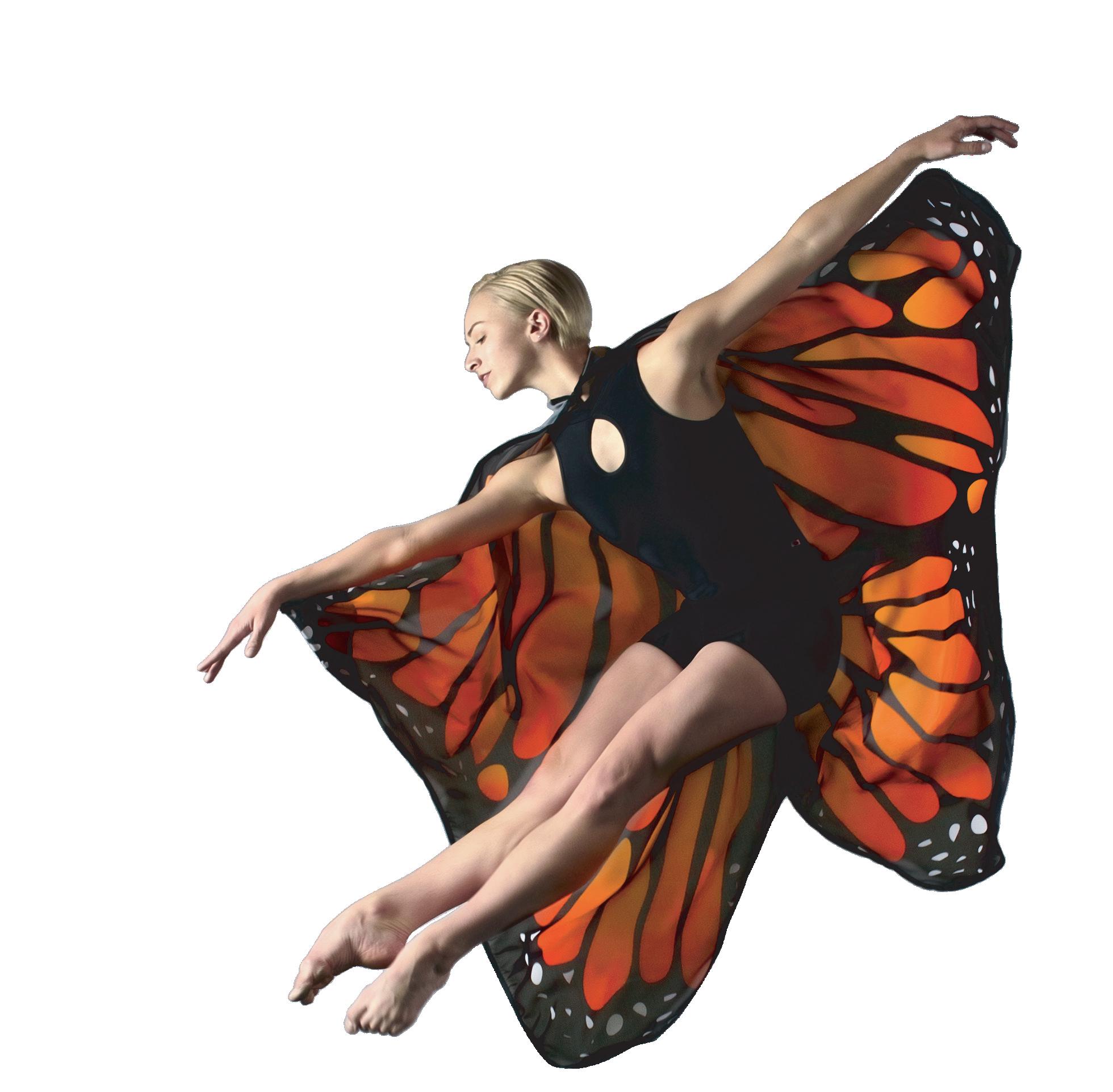





E DESE RT Art | Dance | Music | Theatre, Film & Television Find your creative community at the University of Arizona CFA.ARI Z ONA.ED U
WHAT IS A MUSIC THERAPIST AND HOW CAN I BECOME ONE?
BY STEVEN LIPMAN
as the light and steady beat of hand drums ever had a calming effect on the beat of your heart? Has a beautiful melody ever brought you to tears? Has the right word in the right song pulled at your heartstrings like nothing else before?
In this article, we’ll tell you all about what music therapy is, how it can heal people, and how you can set yourself up for a successful career in the field.
WHAT IS MUSIC THERAPY?
Music therapy is an emerging field in psychology and medicine utilizing the power of music to help people suffering from many different types of psychological and physical issues.
Post-traumatic stress syndrome (PTSD), depression, anxiety, and certain learning difficulties are just a few of the issues that have been proven to be well-served by music therapy. Researchers are also determining if certain types of physical ailments and diseases could even be improved were music therapy included into the treatment plan.
The applications of music therapy are about as varied as there are types of music. Just like all other mental health professionals, music therapists are always searching for clinical solutions catered to their client’s particular needs. One patient may simply need an instrument in the room to help with communication, while another might be best served by the creation or performance aspects of music and music therapy.

HOW DO I BECOME A MUSIC THERAPIST?
Clearly, music therapy is a great opportunity for a student who is interested in the arts. But how do you become one? Do you need to play an instrument? And how much schooling does it take? Most music therapists are able to sing and play at least one instrument, with guitar and piano being the most popular. Since music therapy is in many ways an overlapping of three different disciplines – music creation, psychology, and teaching, students of music therapy bachelor’s degree programs will likely encounter a course load covering psychology, music, and both clinical and educational settings.
As music therapy is technically a medical field as well, you will also need to know about the body. Specific coursework and internships will have you working in clinical settings such as hospitals and treatment centers. These internships are usually
required for board certification, like any other psychological field.
Depending on the program at your school of choice, students of music therapy will graduate with a Bachelor of Music in Music Therapy, a Bachelor of Arts in Music Therapy, or a Bachelor of Science in Music Therapy. Schools like Baldwin Wallace University, The University of Georgia, Montclair University, and Purdue University Fort Wayne all offer music therapy degrees.
For those who want to become music therapists but didn’t study the subject in college there is another option: a music therapy equivalency program. These courses of study allow students to take classes that close the gap between any previous coursework and a full fledged music therapy degree. You will take mostly the requisite courses in psychology, education, and clinical practice to become a board-certified music therapist. •

IN MY OWN WORDS
PAYTON COLE
Why Did You Choose to Attend Baldwin Wallace University?
I was initially drawn to the field of music therapy after reading Musicophilia by Oliver Sacks in middle school. I was drawn to music therapy as a major because it combines many subjects including music, statistics, and psychology to ultimately serve others. Toward the end of high school, I decided to double major in horn performance as well because I wanted to advance in my musicianship and pursue performance goals alongside music therapy ones. In short, I couldn’t choose one major, and I still love both!
I chose to attend Baldwin Wallace for many reasons. The school has a music therapy program (it’s not an extremely common major), acclaimed faculty, and small class sizes. Further, while BW is situated in the small town of Berea, it is very close to Cleveland, providing easy access to various professionals (such as those in The Cleveland Orchestra). Lastly, I was drawn to the communal atmosphere at BW that was displayed every time I visited. Conservatories in particular can be cutthroat and overly competitive, but the environment at BW is very supportive and friendly while also promoting excellence and hard work.
What Did You Hope to Get Out of the Program and Did You Achieve It?
Simply put, I hoped to gain skills to successfully pursue music therapy and performance jobs upon graduating. I hoped to make connections with my peers and music professionals at BW and have many performance opportunities and direct client experiences as a student music therapist. Heading into my final year at BW, I believe that I’ve gotten what I wanted from my conservatory experience.

BW has an all-undergraduate conservatory which has allowed me to have many performance opportunities in both the large and small ensembles presented on campus. Regarding music therapy, I’ve had direct client experiences in a variety of settings and was able to confirm my interest in the field early on in my coursework. I’ve been fortunate to occupy leadership positions throughout my time at BW, and I’ve connected with many highly informative brass musicians and music therapists through BW too.
Did You Have to Prepare for this Major in Any Way?
I had to learn audition materials (on horn) to audition for the large ensembles on campus at the start of the fall semester; however, I didn’t have to prepare for my majors in any other way. Despite that, I did come into the conservatory with some basic music theory skills and novice guitar/ukulele skills. Also, I started piano lessons in 4th grade and continued taking lessons through high school which helped me advance through keyboard courses at BW. Preparation is helpful but not required!
What Was a Typical Day Like at Baldwin Wallace University?
To oversimplify, mornings and afternoons tend to consist of some combination of classes, homework, and practicing, and most afternoons end with SWE (symphonic wind ensemble). Evenings tend to consist of more homework, practicing, and preparing for the next day; however, orchestra rehearsals and music therapy classes occur some evenings. Free time and working happens sporadically throughout the day and week.
What was the Most Memorable Moment of Your Time at Baldwin Wallace University?
The first orchestra concert that was performed for a live audience after a year of no large ensembles or live audiences was thrilling.
32 | 2022 TEENLIFE GUIDE TO PERFORMING & VISUAL ARTS COLLEGES
Baldwin Wallace University:

Wayne State
CLOVE ELLIS

IN MY OWN WORDS
Why Did You Choose to Attend Wayne State University and Select This Major?
At first, I chose Wayne State University because it was close by, its tuition rates were comparably affordable, and I knew the campus from being around it growing up. However, once finishing my BFA I decided to come back to WSU for my Masters of Arts in Arts Administration because the faculty and staff genuinely care so much about student success. The programming is expansive and thorough, and the opportunities for career advancement and networking are endless if you really engage with your professors and department. I would go back and pick WSU again and again and I'm proud to be an Alumni.
What Did You Hope to Get Out of this Program and Did You Achieve It?
When I switched my major to art, I was really just hoping to finish my bachelor's degree with something I cared about and was good at. I ended up achieving Dean's List for excellent academic standing a couple times, real job experience in my field, lifelong mentorship relationships, and a deeply comprehensive understanding of my field as well as my own strengths and weaknesses. I achieved a level of confidence and professionalism that I never anticipated coming into it.
Did You Have to Prepare for This Major in Any Way?
I've been casually making art since I was young. I dipped into several mediums throughout the years and it was my main mode of self-expression, especially in my late teen years. I think those hours at my desk after school were the best preparation. If I went into college for the first time knowing I was going to be pursuing a BFA, I probably would have kept a more organized portfolio of my work. Other than that, the dedicated time developing my craft served me well enough.
What Was a Typical Day Like at Wayne State University?
A typical day was usually equal parts chill and exciting. I chose not to sign up for classes before 11am whenever possible because I knew it would have been hard to get myself to morning classes. So I would generally wake up at 9:30, have a quick breakfast and head to my first class. All of my courses were the perfect balance of challenging and doable, so I was never bored or overly frustrated. I'd head out for a quick lunch, then head to any next classes I might have.
I also tried to spread my classes out over the week so I only had one or two classes a day and would spend most late afternoons doing the coursework or reading. Then the late evenings were mine to get together with friends or relax and watch some TV. It was great because my schedule was my choice, but there was enough structure in my week to stay motivated and organized.
What was the Most Memorable Moment of Your Time At Wayne State University?
The most memorable moment of my time at this college was when I was hired as a student assistant in the art galleries the first time. That moment told me I was enough, I was capable, I was wanted, and I could be successful in a field that we are so often told will be a dead end. It opened my eyes to all of the careers available in the art field that aren't just being an artist, but could be a fulfilling way to supplement my life and income as I develop my studio work. It was also there that I started building relationships that made me feel like I've found a home.
34 | 2022 TEENLIFE GUIDE TO PERFORMING & VISUAL ARTS COLLEGES
University:
STUDY ART AND DE SI GN IN DETROIT

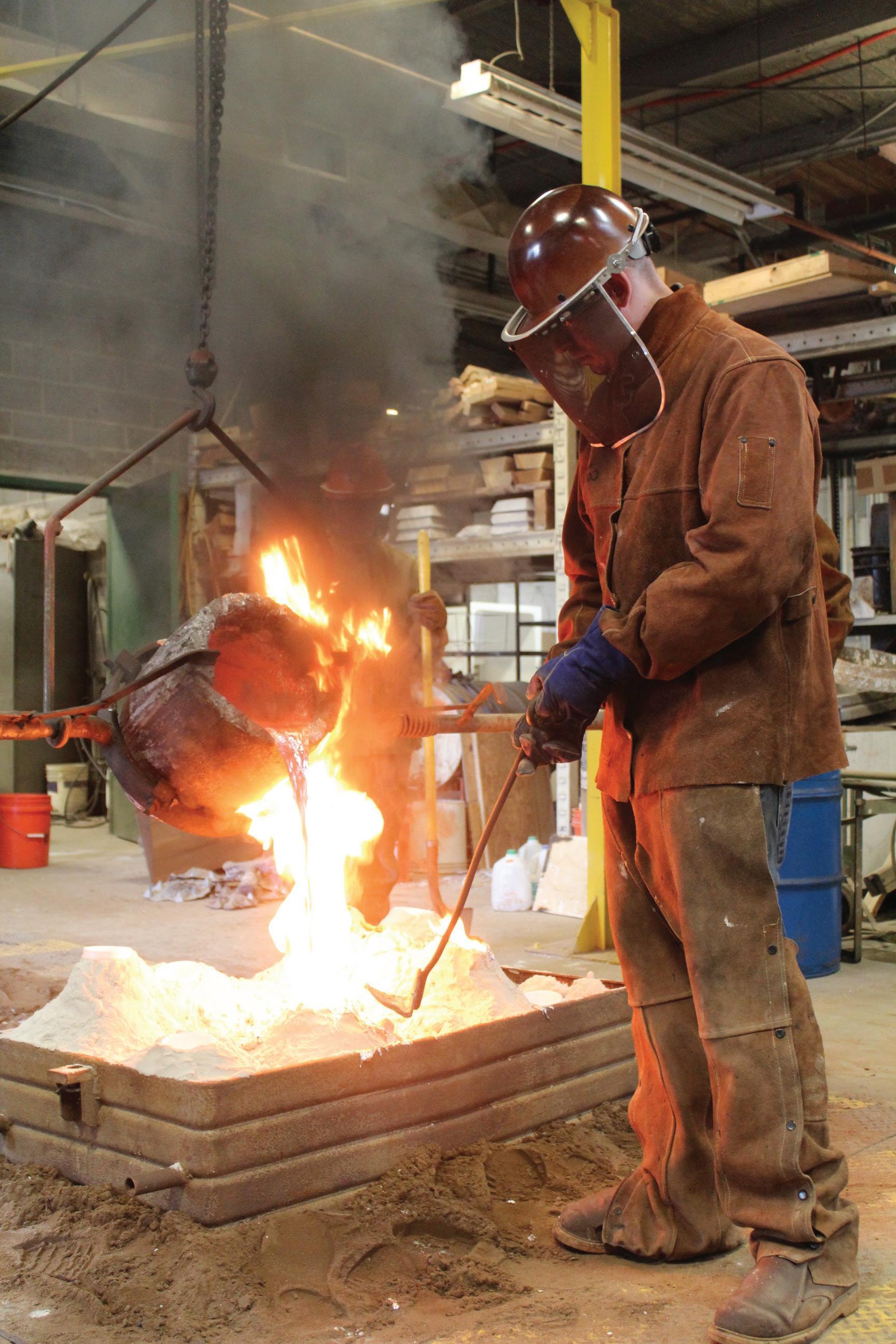
The James Pearson Duffy Department of Art and Art History is a division of Wayne State University’s College of Fine, Performing and Communication Arts, educating the next generation of visual artists, designers and art historians. Wayne State University is a premier urban research university offering more than 350 academic programs through 13 schools and colleges to more than 28,000 students.
For more information visit art.wayne.edu.
IN MY OWN WORDS
Minneapolis College of Art and Design:
MAKAYLA SMITH

Why did you choose to Minneapolis College of Art and Design and select your major?
I always dreamed of going to an art college ever since middle school. As a young POC artist I was really passionate about a lot of different art forms. My interests ranged from drawing and painting to photography or printmaking. In order for me to continue my education after I graduated high school I needed financial aid, which was always a significant factor for choosing my next steps in pursuing my education. In the end, I chose to major in Fine Arts Studio at the Minneapolis College of Art and Design because of its diverse community, financial aid offer, and accessibility to exploring different art forms.
What do you hope to get out of the program? (and/or what have you gotten out of this program?)
I have been able to have the opportunity to explore my different interests and further develop my creative process. Currently I am a Fine Arts Studio major with an emphasis in Photography and a Teaching Artist minor. I love how the program has offered me the opportunity to be able to combine my different interests for my future career paths.
Did you have to prepare for your major in any way?
If you didn't, do you wish you did?
I'm going into my sophomore year at MCAD so when I was an incoming first-year I really did not know what path I wanted to specifically go down. It was a little intimidating to not know what I really wanted to do but thankfully MCAD has many opportunities to explore! I did not choose my major until the last semester of my first year. Looking back I would want to let myself know not to stress about what major I was going to declare because MCAD teachers and staff are really willing to help you figure out the process and what is best for you!
What is a typical day at the Minneapolis College of Art and Design like?
A typical school day for me is going to class from 9:30–noon, having lunch, then going to my studio class from 1:00-6. After that, I would eat dinner and then study or work on projects for my other classes. On nice days I would study outside or go hang out with friends around campus.
What advice do you have for teens looking for the right college?
My advice would be to follow your intuition, not to worry about what other people are doing, and ask TONS of questions. Personally, asking questions seemed very daunting at first but it gets easier, and it is really beneficial. Being a first-generation student, the college search often seemed like a big scary void. I often felt very overwhelmed and had no idea what direction to go in. Looking back, I think what helped me the most was applying to as many colleges as I could. Since I was on a tight budget, I really looked for colleges that had low or free application fees. Many of the colleges I applied to I got accepted into and it really came down to how much financial aid I would be offered in a school, the environment, and opportunities offered that would fit my artistic needs for my future career.
36 | 2022 TEENLIFE GUIDE TO PERFORMING & VISUAL ARTS COLLEGES


CAREERS FOR DESIGN MAJORS TO CONSIDER 5
 BY RYAN O’KEEFE
BY RYAN O’KEEFE
hat do you think of when you hear the words art school? Of a starving artist barely getting by? A high ticket auction item? The Sistine Chapel?
In today’s day and age though, there are a number of career paths for art school students that weren’t even a possibility a few dozen years ago. One of the fastest growing creative fields is design. Design is a broad term that means different things across different indusites, but, broadly speaking, it is the practice of conceptualizing and creating something that is appealing, functional, profitable or something else entirely.
The common saying is that the best design is invisible, but once you start looking you’ll find great
design everywhere — from graphics on social media, to book layouts, to website structure, to toothpaste tubes and so much more. Many of these career paths require knowledge in other disciplines like engineering, architecture or computer science, but, at their core, they start with a creative and artistic spirit of design.
Below, we take a look at five of the most popular majors and career options for design students, but these are far from the only options out there. In fact, if you’re interested in studying the arts and design in college, then a list like this is just the beginning!
1. ENVIRONMENTAL DESIGN: Environmental Design (also known as Sustainable Design) takes interior design and expands it. This creative field com-

THE UNIVERSITY OF NEW MEXICO COLLEGE OF FINE ARTS
DEVELOP YOUR ART!
ART
Promotes an inclusive environment where creativity and critical discourse thrive.
FILM & DIGITAL ARTS
Develops the necessary skills to succeed as a moviemaker, screenwriter, video game designer, film historian, or experimental arts practitioner.

MUSIC
Encourages students to develop their skills as complete musicians.

THEATRE & DANCE
Cultivates critical thinking and analysis, providing a broad, liberal arts education in the related performing arts.
And an Interdisciplinary Arts Degree through a customized degree plan with two or three areas of focus in multiple media and arts disciplines.

LEARN MORE AT FINEARTS.UNM.EDU
bines elements of architecture and graphic design with interior design. A lot of this space will be commercial projects -- lighting, signage, traffic patterns, furniture, and more. It’s about considering how a space is meant to be used and shaping i t to facilitate that comfortably for inhabitants.
2. URBAN DESIGN: City and Regional Planning, also known as urban design, is the development and design of plans and programs for the use of urban and regional space. This major allows students to use collaborative skills and their critical thinking abilities necessary to consider realistic urban growth, and economic, environmental, and social justice in urban neighborhoods and regions, but it also takes a lot of skill in drawing and creative planning.
3. TOY DESIGN: Toy design is expanding beyond the My Little Ponies and American Girl dolls of yesterday. It now includes computer and interactive game design. Students enrolled in toy design
SUCCESS COMES FROM HANDS-ON LEARNING
massey.ac.nz/design-pathways
programs will cover ideation, marketing and engineering of toys, fully preparing them for employment in the industry.
4. INDUSTRIAL DESIGN: Industrial or Product Design can mean many things from designing cars to household appliances to medical equipment and computers — nearly any three-dimensional object. The designer gets to be very hands-on and can incorporate sociology and psychology and human behavior analysis into this creative field along with the obvious graphic design component.
5. UI/UX DESIGN: Short for “user interface” and “user experience,” these two aspects of design are critical to the success of a product or store online. A UX/UI designer ensures that users are able to understand and use complex technological tools and products, combining skills in marketing, research, coding and graphic design to create a product that looks nice and is easy to use. •
The College of Creative Arts at Massey University is New Zealand’s premier and internationally ranked Art and Design School


Offering programs in Design, Screen Arts, Commercial Music, Fine Arts and Māori Visual Arts, it is located in Wellington, New Zealand’s vibrant creative capital city, home to New Zealand’s film industry.
Bachelor of Screen Arts with Honours

The world needs new ways of telling stories. Join the next generation of leaders in digital media. Learn from established industry experts.
Specializations include:

• Animation
• Factual Production
• Film Production
• Game Development
• Immersive Media
• Media Technology
• Visual Effects
CONSERVATORY, ART SCHOOL OR TRADITIONAL UNIVERSITY?
BY STEPHANIE STIZANYI
tudents interested in pursuing degrees in the arts – visual or performing – typically have three options to consider when it comes to college: stand-alone conservatories, conservatories housed within a university, or larger schools with dedicated arts departments.
Before coming up with your game plan for campus visits and application submissions, you will want to have a good understanding of the differences between the three to help you figure out which will best help you reach your goals.
CONSERVATORIES
Conservatories offer a laser-focused, regimented curriculum in a considerably smaller environment than that of a traditional university. This allows students to develop close-knit friendships with peers and have in-depth, individualized learning experiences with expert faculty through studiobased instruction. For the conservatory student, the disciplined nature of the curriculum means limited flexibility for academic or extracurricular pursuits outside of the arts, especially those typically associated with traditional universities like athletics and sororities/fraternities.
STAND-ALONE ART SCHOOL WITHIN A UNIVERSITY
Performing arts colleges housed within large universities, as well as partnerships between external conservatories and universities, give students the option to complete conservatory-level training in a traditional university setting. Doing so provides students with a broader range of academic offerings, most always underpinned
by a robust general education foundation in the humanities and social sciences.
Robert Hoyt, Director of Admissions & Recruitment, Department of Drama, at NYU’s Tisch School of the Arts suggests that the combination of a general liberal arts education with visual or performing arts specializations ensures that students are set up not only for a successful and sustained career in the arts but also in related fields if necessary.
“For students who have a passion for the field but worry about restrictions and limitations a degree in the arts may mean for career prospects, attending a performing arts college within a university provides a real benefit,” says Hoyt. “Students not only receive rigorous studio training similar to that of a strictly-conservatory program, but will also work towards a degree that can lay the foundation for any number of pursuits–not just performing–within a liberal arts setting.”
When deciding where to apply, students should consider that the inclusion of liberal arts elements into the curricular design of their degree may drive a totally different learning experience altogether. “In some instances, stand-alone arts colleges within universities will allow student[s] to chart their own course of study, as well as double-major or minor in other areas of interest,” says Hoyt.
The open-nature of these degrees lend themselves to a more holistic approach of learning, one which for Mei Rui, who was accepted to both Juilliard and Yale Music, meant ultimately attending Yale because of the “nurturing and wholesome dynamic that felt much less cut-throat than that of a typical conservatory.”
40 | 2022 TEENLIFE GUIDE TO PERFORMING & VISUAL ARTS COLLEGES
The focus on a liberal arts education in combination with a mastery in the visual or performing arts in many instances opens the door for students to complete dual undergraduate degrees simultaneously or to enter a 5-year dual undergraduategraduate program during their studies. For Rui, graduate of the Yale College-Yale Music School BA/MM program, this option to earn a master’s in just 5 years was a determining factor, as was their world-class faculty.
ART DEGREES AT TRADITIONAL UNIVERSITIES








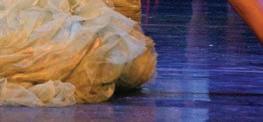


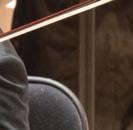
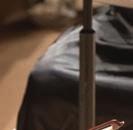












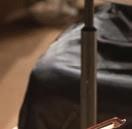







While both traditional conservatories and standalone arts colleges provide focused intensity in the study of the performing or visual arts, not every student knows exactly what they want to study in college. For this reason, enrolling in a traditional university that still offers a strong arts department gives students the flexibility to explore additional topics of inquiry or to change their minds along the way.






For Luis Otero, a graduate of Adelphi University’s theater program who was interested in both performing arts and athletics when he came to college, that was an important distinction.














“I didn’t want to do a conservatory because I wanted to leave open the possibility of what if I like something in addition to acting”. According to Otero, having the space to take courses outside of theater studies and to engage in extracurricular activities allowed for a more holistic academic and personal experience, allowing Otero to learn about himself as a person as well as an actor.

CONCLUSION












There’s no right or wrong choice when it comes to picking an arts college; instead, it’s all a matter of what meets your needs best. As you’re planning your college visits and applications then, carefully consider what you’re hoping to get out of your time at university. •

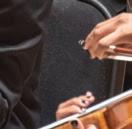
EXPLORE YOUR ARTISTRY Live Your passion New World School of the Arts was created by the Florida Legislature as a center of excellence in the performing and visual arts. It is an educational partnership between Miami-Dade County Public Schools, Miami Dade College and University of Florida. > Premier arts conservatory in South Florida > Located in downtown Miami > Bachelor of Fine Arts [BFA] > Bachelor of Music [BM] > Accredited: National Association of Schools of Dance, Music, Theater, Art & Design > Award-winning & exhibiting alumni > Scholarships & financial assistance DANCE MUSIC THEATER VISUAL ARTS Auditions, Portfolio Reviews, Private Tours, Information: 305 . 237 . 7408 nwsa. mdc. edu New World School of the Arts @NWSA_MIAMI @NWSASchool
2022 PERFORMING & VISUAL ARTS COLLEGES
Looking for an art school? Here are some colleges that offer great programs in music, theater, dance, graphic design, film production, arts management, gaming and more.

AMDA: THE AMERICAN MUSICAL & DRAMA ACADEMY
Location: Los Angeles, CA & New York, NY
Majors: D, F, M, MT, T amda.edu
For over 50 years, AMDA has launched some of the most successful careers in theatre, film and television. AMDA creates industry professionals who don’t just wait for life to happen—they stage their own career path. AMDA graduates take the world’s stages, film sets and movie screens, changing the way we think about art in the 21st century. Learn More »
ANDERSON UNIVERSITY: THE SOUTH CAROLINA SCHOOL OF ARTS
Location: Anderson, SC
Majors: D, F, G, M, MT, P, T, V andersonuniversity.edu/schoolof-the-arts
The South Carolina School of the Arts at Anderson University trains professional visual, musical and theatrical artists who are serious about both their art and Christian faith. Staffed by highly trained and world-class artists, musicians, actors, dancers, theatrical designers, and scholars. Students develop their artistry to its fullest potential so they may thrive professionally and serve others through the arts.
Learn More »
BALDWIN WALLACE UNIVERSITY: CONSERVATORY OF MUSIC
Location: Berea, OH
Majors: M, MT bw.edu/schools/ conservatory-music/ The Baldwin Wallace University Conservatory of Music, located 20 minutes from Cleveland, Ohio, offers professional bachelor's degrees with an emphasis on experiential learning. The Conservatory is an artistic community within a private, liberal arts university, affording students many choices for leadership and performance. Learn More »
42 | 2022 TEENLIFE GUIDE TO PERFORMING & VISUAL ARTS COLLEGES
BIMM INSTITUTE
Location: Brighton, U.K.
Majors: M
bimm.ac.uk
BIMM Institute is the largest and leading provider of music education in Europe. For over 35 years, we’ve taken raw talents and turned them into industry professionals, earning a living doing what they love. Graduates include James Bay, George Ezra (BRIT Award winners) and Ella Mai (Grammy and Billboard Music Awards winner).
Learn More »
BOSTON UNIVERSITY: COLLEGE OF FINE ARTS, SCHOOL OF VISUAL ARTS


Location: Boston, MA
Majors: D, G, M, MT, P, T, V bu.edu/cfa
The College of Fine Arts at BU brings together the Schools of Music, Theatre, and Visual Arts. CFA offers professional training in conservatory-style environments for undergraduate and graduate students, complemented by a liberal arts curriculum for undergraduate students. Education at the College of Fine Arts begins on the BU campus and extends into Boston—a rich center of cultural, artistic, and intellectual activity. Learn More »
CALIFORNIA COLLEGE OF ARTS
Location: San Francisco, CA
Majors: A, F, P, V, O cca.edu
CCA offers studies in 21 undergraduate and 11 graduate majors in the areas of fine arts, architecture, design, and writing. Students have the option of choosing from two campuses, in San Francisco or in Oakland. With access to the Bay Area’s creative communities and thriving industries, you’ll take part in exciting collaborations, deepen your practice, and learn from art and design leaders, including our renowned faculty. Learn More »
A: Architecture, D: Dance, FD: Fashion Design, F: Film, G: Graphic Design, M: Music, MT: Musical Theatre, P: Photography,
PVA Colleges www.teenlife.com/request-pva Find
Parker Story (’21 Illustration) Animation Art History
Creative
Fiber Filmmaking
Illustration Painting Photography Printmaking
kcai.edu @kcartinstitute
your place
Ceramics
Writing
Graphic Design
Product Design Sculpture
MY OWN WORDS
ELIZABETH BISHOP
Why Did You Choose to Attend Gettysburg College and Select This Major?
I chose Gettysburg College so I would have the opportunity to explore my interests. I knew I wanted to major in both Biology and Music because I enjoyed those classes the most in high school. Gettysburg College encouraged me to pursue both of my passions. I also felt connected to the strong and supportive community at the Sunderman Conservatory and the College. When I visited campus for the first time, I fell in love with the beautiful campus and town, and felt very welcomed by all of the students, faculty, and staff that I met.
What Did You Hope to Get Out of the Program, and Did You Achieve It?
I had hoped to have a supportive community and the opportunity to explore academically. These hopes have been fulfilled as well as others I didn’t know to hope for and I have thrived in my programs. I also learned a great amount, developed strong relationships with my professors, and made lifelong friends.
Did You Have to Prepare for This Major in Any Way?
For my music major, I prepared an audition and practiced my main instrument. For my Biology major, preparation wasn’t required but my high school biology classes certainly helped me by giving me a strong foundation going into college classes.
What was a Typical Day like at Gettysburg College?
I’ve always enjoyed that my schedule has varied based on the day of the week. However a typical day for me involves a class or two, sometimes a lab, and usually a music lesson, ensemble, and/ or practice. I always have meals with my friends to catch up and chat. I also work on campus and enjoy going to my jobs in admissions and as orchestra staff. In the evenings I spend time doing homework with my friends.
What Was the Most Memorable Moment of Your Time at Gettysburg College?
I took a Tropical Marine Biology course in which the lab portion of the class was a 17 day trip to the Bahamas. We went snorkeling every day and completed a research project. It was incredible to be able to learn in such a beautiful place, and get to see the oceans, fish, and plants in person instead of only in photos in the classroom.
My favorite memory on campus was right before the concerto competition in the fall of 2021. My fellow competitors and I were all very nervous to perform in the competition. We were all warming up backstage and we danced out our nervous energy together before going out. I felt so supported and happy to be surrounded by such a great community of peers.
What Advice Do You Have for a Teen Looking for the Right College?
I advise a teen looking for the right college to find a place where you feel comfortable with, connected to, and supported by the students, faculty, and staff. Your college will be your home for the next 4 years and should support you in your passions so you can thrive and reach your fullest potential.

44 | 2022 TEENLIFE GUIDE TO PERFORMING & VISUAL ARTS COLLEGES
Gettysburg College:
IN
CALIFORNIA INSTITUTE OF THE ARTS
Location: Valencia, CA
Majors: D, F, M, P, T, V, O calarts.edu
CalArts is renowned internationally as a game-changer in the education of professional artists. The transformative cultural impact of our alumni shows why: We bring out visionary creative talent unlike any other university, school or conservatory. An all-inclusive community for a diversity of authentic voices, CalArts today offers more than 70 comprehensive degree programs in the visual, performing, media and literary arts. Learn More »
COLUMBUS COLLEGE OF ART & DESIGN

Location: Columbus, OH
Majors: F, G, P, V, O ccad.edu
Columbus College of Art & Design teaches undergraduate and graduate students in the midst of a thriving creative community in Columbus, Ohio. CCAD has 12 undergraduate majors in its Bachelor of Fine Arts program and two Master’s programs that produce graduates equipped to shape culture and business at the highest level. Learn More »
DEAN COLLEGE
Location: Franklin, MA
Majors: D, MT, T, O dean.edu/academics/ schools/school-of-the-arts
Dean College is a private residential college located just outside of Boston, in Franklin, MA, with unique programs geared to individual learning styles. Students can choose from programs in the School of the Arts, the School of Business, the Joan Phelps Palladino School of Dance and the School of Liberal Arts. A degree in theatre or arts and entertainment management from Dean College opens the door to a world of possibilities. Learn More »
PVA Colleges www.teenlife.com/request-pva
A: Architecture, D: Dance, FD: Fashion Design, F: Film, G: Graphic Design, M: Music, MT: Musical Theatre, P: Photography, T: Theatre, V: Visual/Fine Arts, O: Other
www.teenlife.com/request-pva
DREXEL UNIVERSITY: WESTPHAL COLLEGE OF MEDIA & DESIGN
Location: Philadelphia, PA
Majors: D, G, M, P, T, V, O drexel.edu/westphal
Drexel’s Westphal College prepares students who are passionate about design, media and performing arts to succeed in these competitive fields. We offer 17 undergraduate and 9 graduate majors, including top-ranked programs in Game Design, Fashion Design, Interior Design, Product Design, and Graphic Design. Learn More »
GEORGE WASHINGTON UNIVERSITY: CORCORAN SCHOOL OF THE ARTS & DESIGN
Location: Washington D.C.
Majors: D, G, M, P, T, V, O corcoran.gwu.edu
Focused on the idea of direct and intensely creative education, the Corcoran offers 22 bachelors and masters degrees in the visual, scholarly and performing arts. Part of the George Washington University, the school is an incubator for artists, designers and scholars, who learn from renowned faculty in the nation’s capital. Learn More »
GETTYSBURG COLLEGE: SUNDERMAN CONSERVATORY OF MUSIC
Location: Gettysburg, PA
Majors: M, F, V, O gettysburg.edu/music
Gettysburg’s Sunderman Conservatory provides excellent musical training grounded in the liberal arts for students who seek to make music integral to their lives, whether as a career or a lifelong avocation. Honoring our place as a dynamic conservatory within one of the nation’s leading liberal arts colleges, we foster rigorous study, creativity, intellectual curiosity, and joy in music. Learn More »
HARCUM COLLEGE
Location: Bryn Mawr, PA
Majors: FD, G, P, V harcum.edu
Harcum is an associate’s degreegranting independent residential college located near Philadelphia offering career-ready programs in fashion design, fashion merchandising, graphic design, interior design, and photography—all housed in our picturesque, award-winning Art & Design Center. Learn More »
INDIANA UNIVERSITY: ESKENAZI SCHOOL OF
ART, ARCHITECTURE & DESIGN
Location: Bloomington, IN
Majors: A, FD, G, P, V, O eskenazi.indiana.edu
Eskenazi School is where artists, designers, and merchandisers find their community and shape their skills with guidance from expert creatives. We offer degrees in Comprehensive Design, Fashion Design, Interior Design, Merchandising, and Studio Art, with options to explore ceramics, digital art, fibers, graphic design, metals, painting, photo, printmaking, and sculpture. Learn More »
JAMES MADISON UNIVERSITY: COLLEGE OF VISUAL & PERFORMING ARTS
Location: Harrisonburg, VA
Majors: A, D, G, M, MT, P, T, V jmu.edu/arts
The College of Visual and Performing Arts at James Madison University includes the School of Art, Design, Art History; School of Music; and School of Theatre and Dance. Our academic programs focus on highlevel artistic training combined with entrepreneurial action and the integration of practical training along with liberal arts studies. Learn More »
KANSAS CITY ART INSTITUTE
Location: Kansas City, MO
Majors: F, G, P, V, O kcai.edu
The Kansas City Art Institute is a four-year, independent, fully accredited college of art and design offering degrees in a variety of disciplines. You will find the tools and space to create: design boldly, sculpt adventurously, capture dramatically, paint vividly, write poetically. Seek inspiration and act on it at KCAI. Learn More »
LAGUNA COLLEGE OF ART + DESIGN
Location: Laguna Beach, CA
Majors: G, V lcad.edu
Laguna College of Art + Design has a location like no other, in a beachside community that lives and breathes creativity – Laguna Beach, California. Laguna College of Art + Design’s extensive foundation program gives a thorough preparation for excellence in your chosen field. Learn More »
A: Architecture, D: Dance, FD: Fashion Design, F: Film, G: Graphic Design, M: Music, MT: Musical Theatre, P: Photography, T: Theatre, V: Visual/Fine Arts, O: Other
46 | 2022 TEENLIFE GUIDE TO PERFORMING & VISUAL ARTS COLLEGES
PVA Colleges
LIVERPOOL INSTITUTE FOR PERFORMING ARTS
Location: Liverpool, UK
Majors: D, F, M, MT, T, V, O lipa.ac.uk
Co-founded in 1996 by Sir Paul McCartney and based in his former school buildings, we are one of the world leaders for performers and those who make performance possible. Our training replicates the working practices of the arts and entertainment industries so that you enjoy sustained employment in your chosen field. Learn More »
LOYOLA UNIVERSITY NEW ORLEANS, COLLEGE OF MUSIC AND MEDIA
Location: New Orleans, LA
Majors: F, G, M, MT, P, T, O loyno.edu
Loyola University New Orleans is a private, liberal arts, Jesuit institution. The College of Music and Media is home to twentyfive performing and visual arts majors. Each program is grounded in professional mentorship, real world experience, and skill development. Learn More »





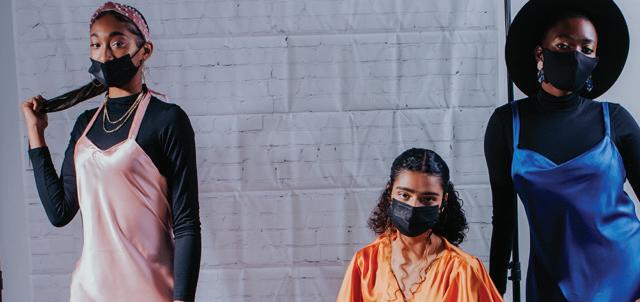


MASSEY UNIVERSITY, COLLEGE OF CREATIVE ARTS




Location: Wellington, NZ
Majors: F, FD, G, M, P, V, O creative.massey.ac.nz

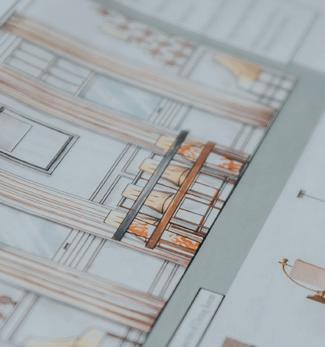
The College of Creative Arts at Massey University is a world-class art and design school offering programs in Design, Screen Arts, Commercial Music, Fine Arts and Māori Visual Arts. Located in Wellington, New Zealand’s vibrant creative capital city, home to New Zealand’s film industry, it’s New Zealand’s premier and internationally ranked Art and Design School. Learn More »

TAKE YOUR CREATIVITY TO THE NEXT LEVEL. GRAPHIC DESIGN INTERIOR DESIGN FASHION DESIGN FASHION MERCHANDISING 610-526-6050 ENROLL@HARCUM.EDU
PVA Colleges www.teenlife.com/request-pva
A: Architecture, D: Dance, FD: Fashion Design, F: Film, G: Graphic Design, M: Music, MT: Musical Theatre, P: Photography, T: Theatre, V: Visual/Fine Arts, O: Other
MINNEAPOLIS COLLEGE OF ART AND DESIGN (MCAD)
Location: Minneapolis, MN
Majors: F, P, G, V mcad.edu
Recognized nationally and internationally for an innovative, interdisciplinary approach to visual arts education since 1886, the Minneapolis College of Art and Design (MCAD) offers precollege programs, bachelor’s and master’s degrees, and continuing education classes for all ages. Learn More »
MONTSERRAT COLLEGE OF ART
Location: Beverly, MA
Majors: F, G, P, V, O montserrat.edu
Montserrat College of Art is a small, private, affordable, residential college of communication art and design in Beverly, MA, a halfhour from Boston and blocks to the ocean. Arts immersion 24-7 leads to the Bachelor of Fine Arts degree. Required internships and engaging curricula help students find their creative professions. Learn More »
NEW WORLD SCHOOL OF THE ARTS
Location: Miami, FL
Majors: D, F, M, MT, P, T, V nwsa.mdc.edu
New World School of the Arts, located in Miami, Florida, is a center for excellence in the visual and performing arts. It provides a comprehensive educational program of artistic training, academic and creative development and preparation for professional careers in the arts. Learn More »
NORWICH UNIVERSITY OF THE ARTS
Location: Norwich, UK
Majors: F, G, V, O nua.ac.uk
Norwich University of the Arts (NUA) is a leading UK university offering three year undergraduate and one year graduate programmes in art, design and media disciplines. For over 170 years NUA has offered specialist studio-based, practice-led learning that prepares graduates for success in the creative industries. Learn More »
PACIFIC LUTHERAN UNIVERSITY: SCHOOL OF ARTS & COMMUNICATIONS
Location: Tacoma, WA
Majors: F, G, P, V, O plu.edu/soac
The School of Arts and
Communication at Pacific Lutheran University houses the departments of Art & Design, Communication, Music, and Theatre & Dance. Presenting over 250 events each season, we combine the best practices of liberal arts education with the benefits of applied and professional study. Learn More »
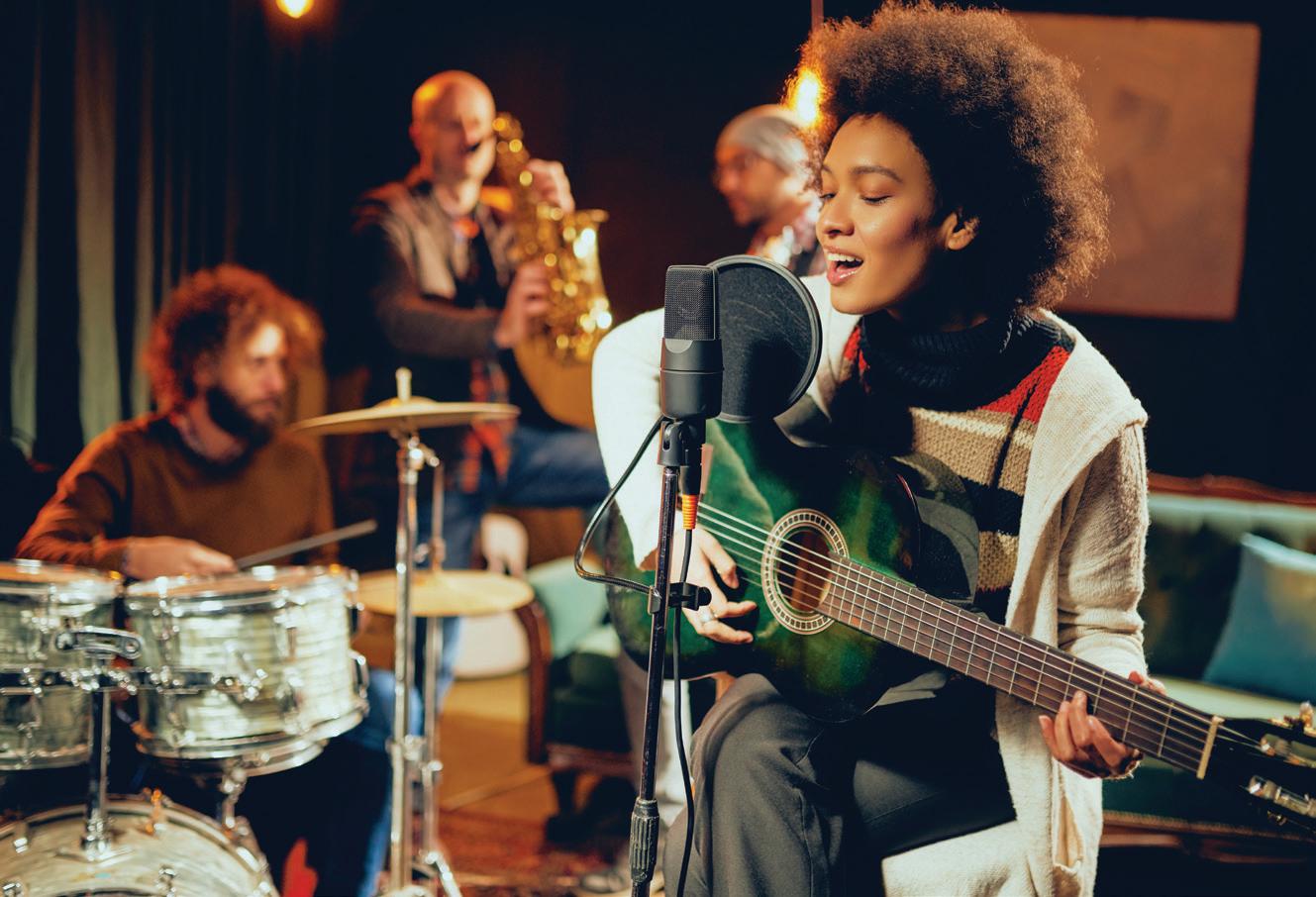
RIDER UNIVERSITY: SCHOOL OF COMMUNICATION, MEDIA AND PERFORMING ARTS
Location: Lawrenceville, NJ
Majors: D, M, T rider.edu/wca
Rider University: School of Communication, Media and Performing Arts programs educate and train aspiring performers, artists, teachers, and students with artistic interests to pursue professional, scholarly, and lifelong personal opportunities in dance, music, theater, arts administration, film and television and more!
Learn More »
SCHOOL OF ART INSTITUTE OF CHICAGO (SAIC)
Location: Chicago, IL
Majors: F, P, V saic.edu
The School of the Art Institute of Chicago, the nation’s most influential art and design school, offers a unique interdisciplinary curriculum designed to provide students unparalleled opportunities to develop their creative and critical abilities. Learn More »
48 | 2022 TEENLIFE GUIDE TO PERFORMING & VISUAL ARTS COLLEGES
www.teenlife.com/request-pva
PVA Colleges
SETON HILL UNIVERSITY: SCHOOL OF VISUAL & PERFORMING ARTS

Location: Greensburg, PA
Majors: D, G, M, MT, T, V setonhill.edu
Creative, innovative, imaginative -this is what it means to be a Seton Hill University student! Seton Hill has a passion for the arts. It is reflected in the work of students and faculty who thrive as a community of artists, musicians, performers, therapists and educators. Learn More »


SYRACUSE UNIVERSITY: COLLEGE OF VISUAL & PERFORMING ARTS
Location: Syracuse, NY
Majors: D, F, G, M, MT, P, T, V vpa.syr.edu
Syracuse University’s College of Visual and Performing Arts (SU:VPA) in Syracuse, New York, is committed to the education of cultural leaders who will engage and inspire audiences through performance, visual art, design, scholarship, and commentary. Come to SU to Make Your Mark! Learn More »
THE BLACKBIRD ACADEMY
Location: Nashville, TN
Majors: M, MT, O
theblackbirdacademy.com
Learn Live Sound and Studio
Engineering on the best gear, from top engineers, producers, recording artists and educators at our Professional School of Audio. The Blackbird Academy’s campus is built on the foundation of the Blackbird Studio in Nashville, Tennessee, a multi-studio production facility where award-winning records are made every day. Learn More »
Create your path
SCHOOL OF ART, DESIGN AND ART HISTORY
Architectural Design
Art Education
Art History
Graphic Design
Industrial Design
Studio
Art
SCHOOL OF THEATRE AND DANCE
Dance
Dance Education
Musical Theatre Theatre
Theatre Education
SCHOOL OF MUSIC Composition
Jazz Studies
Music Education
Music Industry
Music Theatre
Performance
www.jmu.edu/arts
PVA Colleges
www.teenlife.com/request-pva
A: Architecture, D: Dance, FD: Fashion Design, F: Film, G: Graphic Design, M: Music, MT: Musical Theatre, P: Photography, T: Theatre, V: Visual/Fine Arts, O: Other
THE ROYAL CENTRAL SCHOOL OF SPEECH AND DRAMA: UNIVERSITY OF LONDON
Location: London, UK
Majors: MT, T, V, O cssd.ac.uk
Located in the heart of London, UK, The Royal Central School of Speech and Drama has a long reputation of developing talented creatives who enjoy success across the globe. From Oscar-winning actors to Tony Awardwinning sound designers, every area of performance and production is covered by our courses. Learn More »
UNIVERSITY OF ARIZONA, COLLEGE OF FINE ARTS
Location: Tucson, AZ
Majors: D, F, G, M, MT, P, T, V cfa.arizona.edu
The College of Fine Arts at the University of Arizona has a world-class reputation. The University of Arizona CFA offers undergraduate and graduate degree programs through the School of Art, School of Dance, School of Music, and the School of Theatre, Film and Television. Learn More »
UNIVERSITY OF COLORADO - DENVER: COLLEGE OF ARTS & MEDIA
Location: Denver, CO
Majors: F, M, T, V cam.ucdenver.edu
The College of Arts & Media at CU Denver knows that talented creators and innovators deserve careers doing what they love. CAM leverages the real-world experience of acclaimed (and connected) faculty and the location of the college—in the heart of Denver’s thriving artistic, creative, and entertainment industry. Learn More »
Dance Design & Production Drama
Filmmaking Music
#PoweringCreativity
UNCSA is a top-ranked public conservatory, an industry leader and a point of pride for North Carolina. Our conservatories provide intensive training across disciplines at the high school, undergraduate and graduate levels.

Teen Live_half pg_mech.indd 1 8/15/22 12:54 PM
Colleges www.teenlife.com/request-pva A: Architecture, D: Dance, FD: Fashion Design, F: Film, G: Graphic Design, M: Music, MT: Musical Theatre, P: Photography, T: Theatre, V: Visual/Fine Arts, O: Other
UNCSA.EDU
PVA
UNIVERSITY OF HOUSTON: KATHERINE MCGOVERN COLLEGE OF THE ARTS

Location: Houston, TX
Majors: D, G, M, P, T, V uh.edu/kgmca
Kathrine G. McGovern College of the Arts at the University of Houston is a dynamic powerhouse of creativity and collaboration in one of America’s most culturally diverse cities. Bringing together the performing and visual arts entities at the Kathrine G. McGovern College of the Arts firmly believes in the transformative power of the arts and their ability to positively shape the world. The KGMCA is working to enrich and empower our students, community and the world. Learn More »
UNIVERSITY OF NEW MEXICO: COLLEGE OF FINE ARTS
Location: Albuquerque, NM
Majors: D, F, G, M, MT, P, V, O finearts.unm.edu
UNM College of Fine Arts offers over 19 degrees in Visual and Performing Arts. Areas of study: Studio Art, Art History, Art Education, Photography Interdisciplinary Arts, Film Production, Video Game Designer, Animation, Music, Conducting, Jazz, Music Education, Performance, Dance, Design & Technology for Performance, Dramatic Writing and Theatre. Learn More »
UNIVERSITY OF NORTH CAROLINA: SCHOOL OF THE ARTS
Location: Winston-Salem, NC
Majors: D, F, MT, P, T, V, O uncsa.edu
UNCSA is a top-ranked creative and performing arts conservatory in WinstonSalem, N.C. Founded in 1963 as America’s first public arts conservatory, UNCSA celebrates more than 50 years of training wildly creative young artists in five professional schools: Dance, Design & Production (including Visual Arts HS program), Drama, Filmmaking and Music. Learn More »
2022 TEENLIFE GUIDE TO PERFORMING & VISUAL ARTS COLLEGES | 51 PVA Colleges www.teenlife.com/request-pva
PVA Colleges
www.teenlife.com/request-pva
UNIVERSITY OF THE ARTS
Location: Philadelphia, PA
Majors: D, F, MT, P, T, V, O uarts.edu
University of the Arts’ mission is simple: to advance human creativity. UArts offers programs in design, fine arts, media arts, music, dance, theater and writing taught by working artists, and fosters collaboration across disciplines through 23 minors that are open to all students, regardless of their majors. Learn More »
WAYNE STATE UNIVERSITY DEPARTMENT OF ART AND ART HISTORY
Location: Detroit, MI
Majors: V, O art.wayne.edu
The James Pearson Duffy
Department of Art and Art History is educating the next generation of visual artists, designers, and art historians. WSU is a premier urban research university, in the heart of Detroit, offering more than 350 programs to more than 28,000 students. Learn More »
A: Architecture, D: Dance, FD: Fashion Design, F: Film, G: Graphic Design, M: Music, MT: Musical Theatre, P: Photography, T: Theatre, V: Visual/Fine Arts, O: Other
WILLIAM PEACE UNIVERSITY
Location: Raleigh, NC
Majors: MT, T, V peace.edu
When the stage is calling, William Peace University’s programs will prepare you to answer: Musical Theatre, Theatre, and BFA. One of only a handful of degree programs of its kind in the area, WPU’s core curriculum is an immersion, with performances, trips to New York, internships, study abroad, and professional auditions. Study under and be mentored by accomplished faculty and guest artists with impressive academic achievements as well as Broadway, television and film credits. Learn More »
100
S
YEAR
Use this index to find a school's ad or listing by location.
2022 TEENLIFE GUIDE TO PERFORMING & VISUAL ARTS COLLEGES | 53 UNITED STATES ARIZONA University of Arizona: College of Fine Arts 29 50 CALIFORNIA AMDA: The American Musical & Dramatic Academy 17 42 California College of the Arts 45 43 California Institute of the Arts 45 Laguna College of Art + Design 7 46 COLORADO University of Colorado - Denver: College of Arts & Media 23 50 FLORIDA New World School of the Arts 41 48 ILLINOIS School of Art Institute of Chicago (SAIC) 9 48 INDIANA Indiana University: Eskenazi School of Art, Architecture & Design 3 46 LOUISIANA Loyola University New Orleans: College of Music and Media 47 MASSACHUSETTS Boston University: College of Fine Arts, School of Visual Arts 43 Dean College Back Cover 45 Montserrat College of Art 48 MICHIGAN Wayne State University Department of Art and Art History 35 52 MINNESOTA Minneapolis College of Art and Design (MCAD) Inside Front 48 MISSOURI Kansas City Art Institute 43 46 NEW JERSEY Rider University: School of Communication, Media and Performing Arts 25 48 NEW MEXICO University of New Mexico: College of Fine Arts 38 51 NEW YORK Syracuse University: College of Visual & Performing Arts 15 49 INDEX NORTH CAROLINA University of North Carolina: School of the Arts 50 51 William Peace University 37 52 OHIO Baldwin Wallace University: Conservatory of Music 33 42 Columbus College of Art & Design 1 45 PENNSYLVANIA Drexel University: Westphal College of Media & Design 31 46 Gettysburg College: Sunderman Conservatory of Music 21 46 Harcum College 47 46 Seton Hill University: School of Visual & Performing Arts 11 49 University of the Arts 52 SOUTH CAROLINA Anderson University: the South Carolina School of Arts 4 42 TENNESSEE The Blackbird Academy 12 49 TEXAS University of Houston: Katherine McGovern College of the Arts 2 51 VIRGINIA James Madison University: College of Visual & Performing Arts 49 46 WASHINGTON Pacific Lutheran University: School of Arts & Communications 30 48 WASHINGTON, D.C. George Washington University: Corcoran School of the Arts & Design 46 NEW ZEALAND Massey University: College of Creative Arts 39 47 UNITED KINGDOM BIMM Institute 19 43 Liverpool Institute for Performing Arts 27 47 Norwich University of the Arts 48 The Royal Central School of Speech and Drama: University of London 22 50
GEOGRAPHIC LOCATION Ad Listing Ad Listing
PERFORMING ARTS PROGRAMS AT DEAN COLLEGE






Dance, B.A. and B.F.A. Triple Track • Ballet • Jazz/Tap/Hip-Hop • Modern Focus Areas: • Choreography • Dance Pedagogy/Education • Dance Studies • Performance • Pre-Athletic Training • Studio Management Explore, Visit, Apply and Audition dean.edu/arts dean.edu/dance 99 Main Street, Franklin, MA 02038
Scholarships and Financial Aid Available Arts & Entertainment Management Theatre • Acting • Musical Theatre • Technical Theatre • Theatre Studies







































































































 BY RYAN O’KEEFE
BY RYAN O’KEEFE









































































































